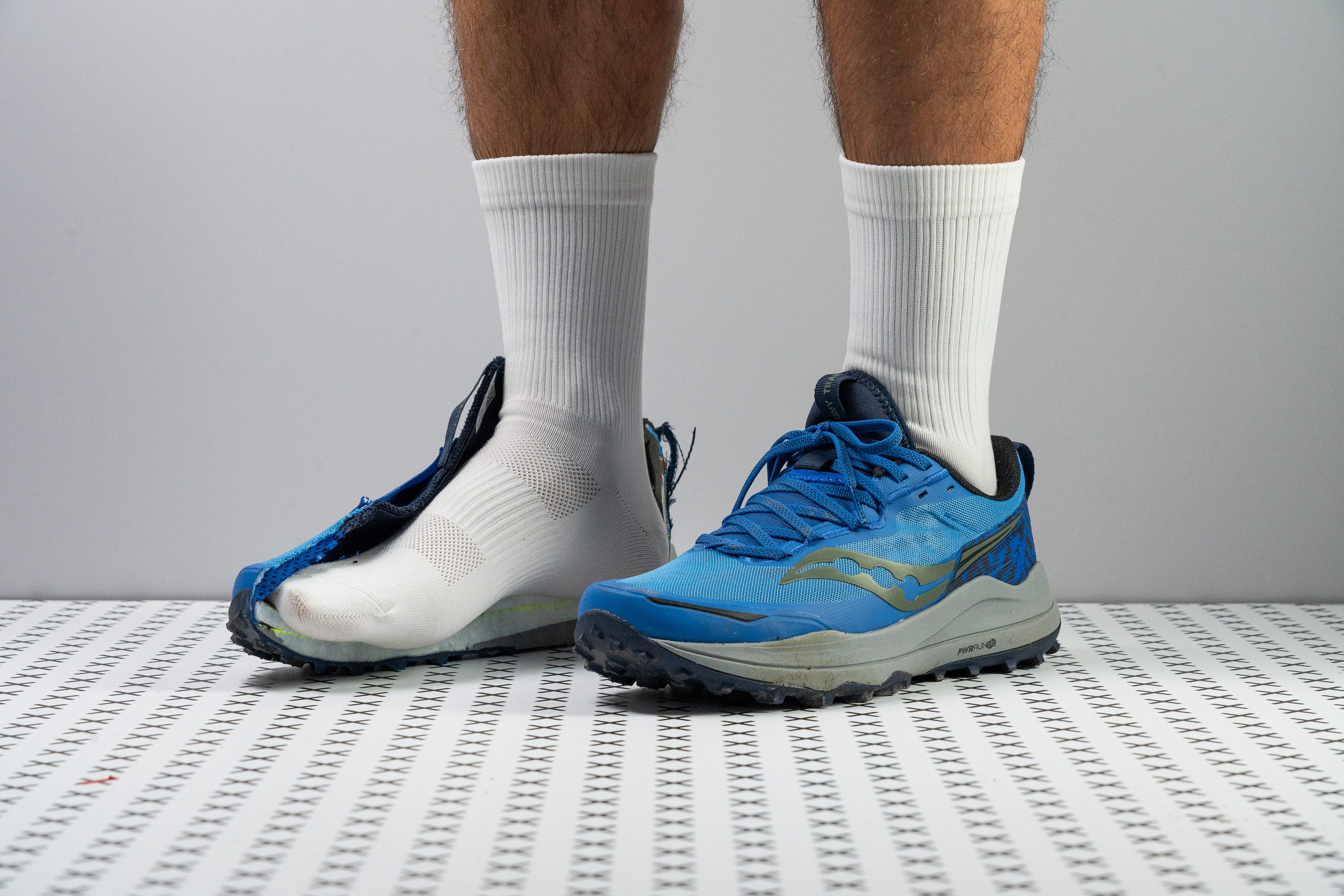Our verdict
- Top pick in best ultra running shoes (2024)
- Top pick in best running shoes for spartan race (OCR) (2024)
Pros
- Snug, secure fit
- Highly breathable
- Enhanced lacing from v1
- Responsive midsole
- Upgraded durability
- Solid, stable feel
- Long-run-ready cushioning
Cons
- Bootie upper might feel odd to some
- Slightly heavy for its size
- Firm cushioning
Audience verdict
- Top 27% in trail running shoes
Comparison
The most similar running shoes compared
+ + Add a shoe | |||||
|---|---|---|---|---|---|
| Audience score | 88 Great! | 78 Decent! | 85 Good! | 87 Great! | |
| Price | £150 | £140 | £150 | £170 | |
| Trail terrain | ModerateTechnical | Moderate | Light | Technical | |
| Shock absorption | - | Moderate | Moderate | - | |
| Energy return | - | Low | Moderate | - | |
| Traction | - | - | High | - | |
| Arch support | Neutral | Neutral | Neutral | Neutral | |
| Weight lab Weight brand | 10.3 oz / 293g 9.2 oz / 262g | 9.8 oz / 278g 9.8 oz / 277g | 11 oz / 312g 10.9 oz / 309g | 11.4 oz / 323g 10.7 oz / 303g | |
| Drop lab Drop brand | 7.3 mm 6.0 mm | 4.9 mm 5.0 mm | 6.5 mm 6.0 mm | 11.3 mm 10.0 mm | |
| Strike pattern | Mid/forefoot | Mid/forefoot | Mid/forefoot | Heel | |
| Size | True to size | Slightly small | - | Half size small | |
| Midsole softness | Balanced | Balanced | Soft | Firm | |
| Difference in midsole softness in cold | Small | Small | Normal | Small | |
| Plate | Rock plate | ✗ | ✗ | ✗ | |
| Toebox durability | Bad | Good | Decent | Good | |
| Heel padding durability | Good | Good | Bad | Good | |
| Outsole durability | Decent | Decent | Decent | Decent | |
| Breathability | Moderate | Warm | Moderate | Moderate | |
| Width / fit | Medium | Medium | Medium | Narrow | |
| Toebox width | Medium | Medium | Medium | Medium | |
| Stiffness | Stiff | Stiff | Moderate | Stiff | |
| Torsional rigidity | Stiff | Stiff | Stiff | Stiff | |
| Heel counter stiffness | Stiff | Moderate | Stiff | Moderate | |
| Lug depth | 4.6 mm | 4.0 mm | 3.5 mm | 5.0 mm | |
| Heel stack lab Heel stack brand | 34.1 mm 32.5 mm | 32.1 mm 40.0 mm | 37.6 mm 36.0 mm | 33.2 mm 26.0 mm | |
| Forefoot lab Forefoot brand | 26.8 mm 26.5 mm | 27.2 mm 35.0 mm | 31.1 mm 30.0 mm | 21.9 mm 16.0 mm | |
| Widths available | Normal | NormalWide | Normal | Normal | |
| For heavy runners | ✗ | ✓ | ✗ | ✗ | |
| Season | All seasons | All seasons | All seasons | All seasons | |
| Removable insole | ✓ | ✓ | ✓ | ✓ | |
| Orthotic friendly | ✓ | ✓ | ✓ | ✓ | |
| Ranking | #231 Top 35% | #329 Bottom 11% | #200 Bottom 46% | #150 Top 41% | |
| Popularity | #556 Bottom 15% | #53 Top 15% | #186 Top 50% | #259 Bottom 30% |
Who should buy
We highly recommend the Saucony Xodus Ultra 2 for:
- Road runners seeking a trail equivalent for their daily runs.
- Saucony enthusiasts wanting the familiar feel of PWRRUN PB foam off-road.
- Ultra marathoners looking for a non-plated shoe for 50 to 100-mile races.
In our lab tests, we were impressed by its versatility, confirming it's a solid choice for a wide range of trail adventures.
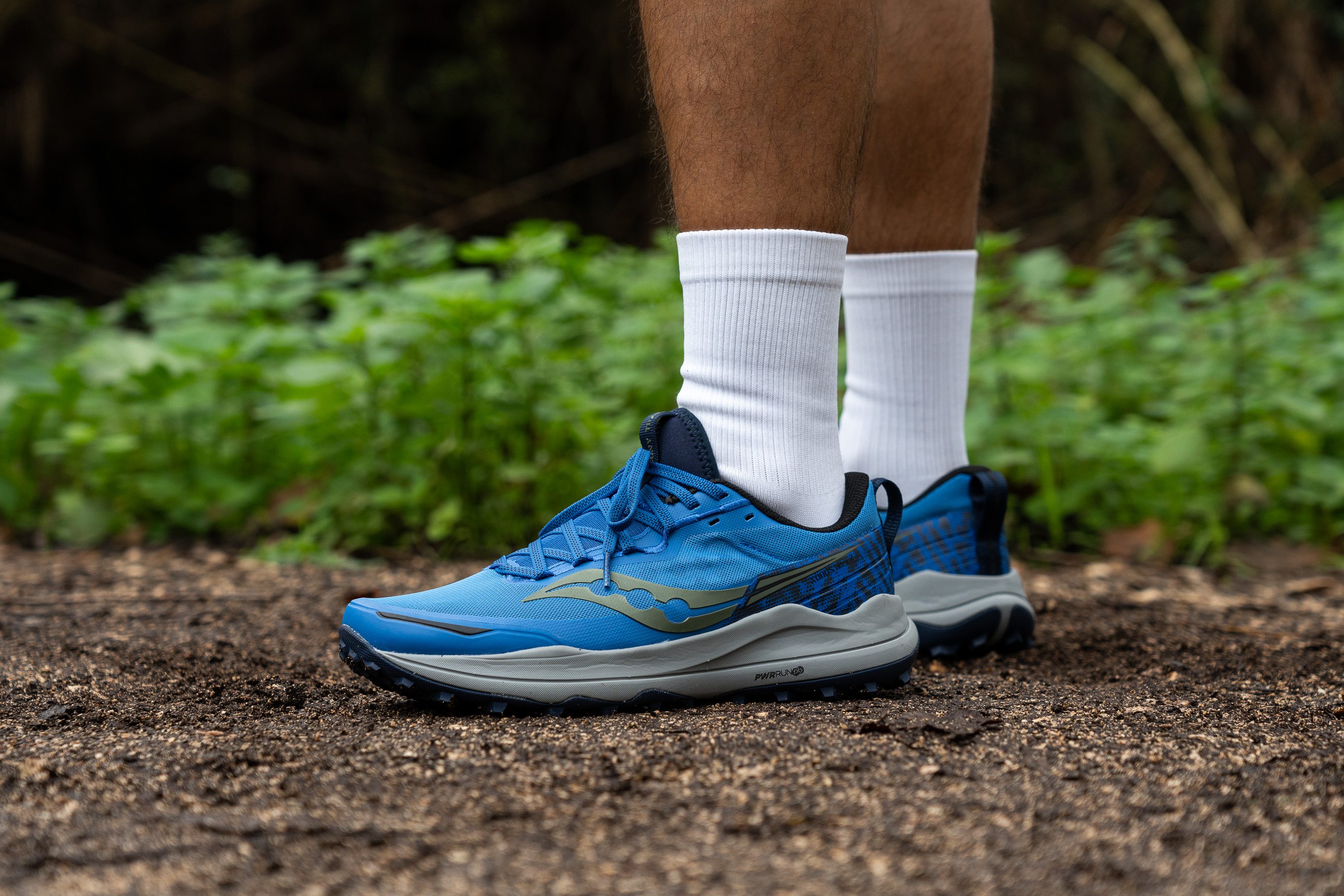
Who should NOT buy
We think the Saucony Xodus Ultra 2 isn't the best pick for every runner out there. Its weight, tipping over 10 ounces, makes it less appealing for those who prioritise lightness. For a lighter alternative, we suggest the Hoka Speedgoat 5, especially if weight is a deal-breaker for you.
Moreover, while the Xodus Ultra 2 has potential for ultra running, we found its foam to be on the firmer side. For runners who prefer a more cushioned, softer experience, we recommend exploring the Hoka Mafate Speed 4 or the Brooks Caldera 6. These models provide the plush ride that ultra runners often seek, making them better choices for those epic distances.
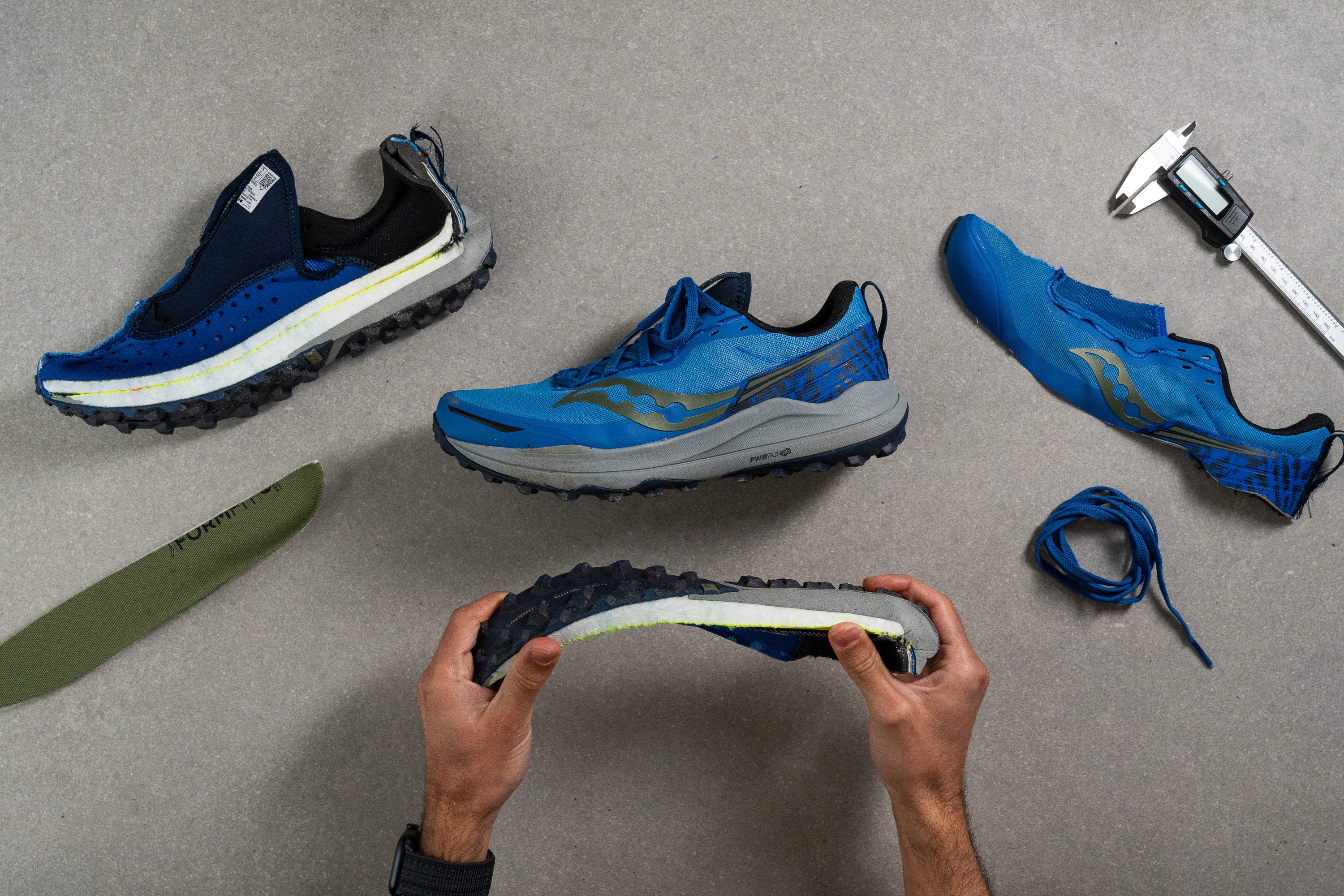
Cushioning
Heel stack
The Xodus Ultra 2 boasts a 34.1-mm heel stack. While it may not qualify as maximalist by today's standards as it would be in the past, it still ranks as a max-cushioned shoe for us. Thus, it's fully ready to handle ultras, even for heel strikers.
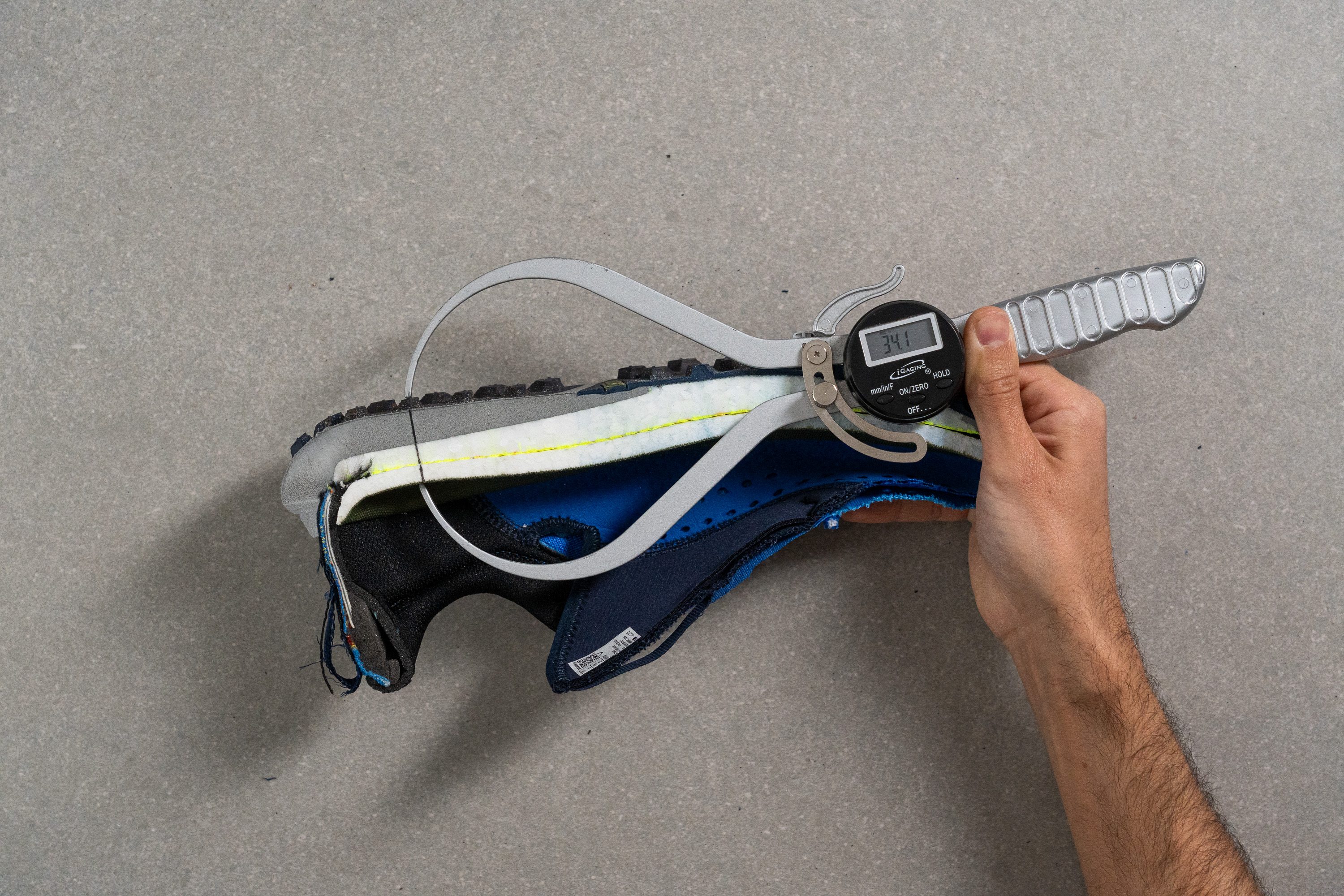
| Xodus Ultra 2 | 34.1 mm |
| Average | 32.6 mm |
Forefoot stack
After carefully and repeatedly measuring with our callipers, we found the forefoot stack to be 26.8 mm. It's a tad more cushioned than many shoes, striking a nice balance between responsive cushioning and ground feel.
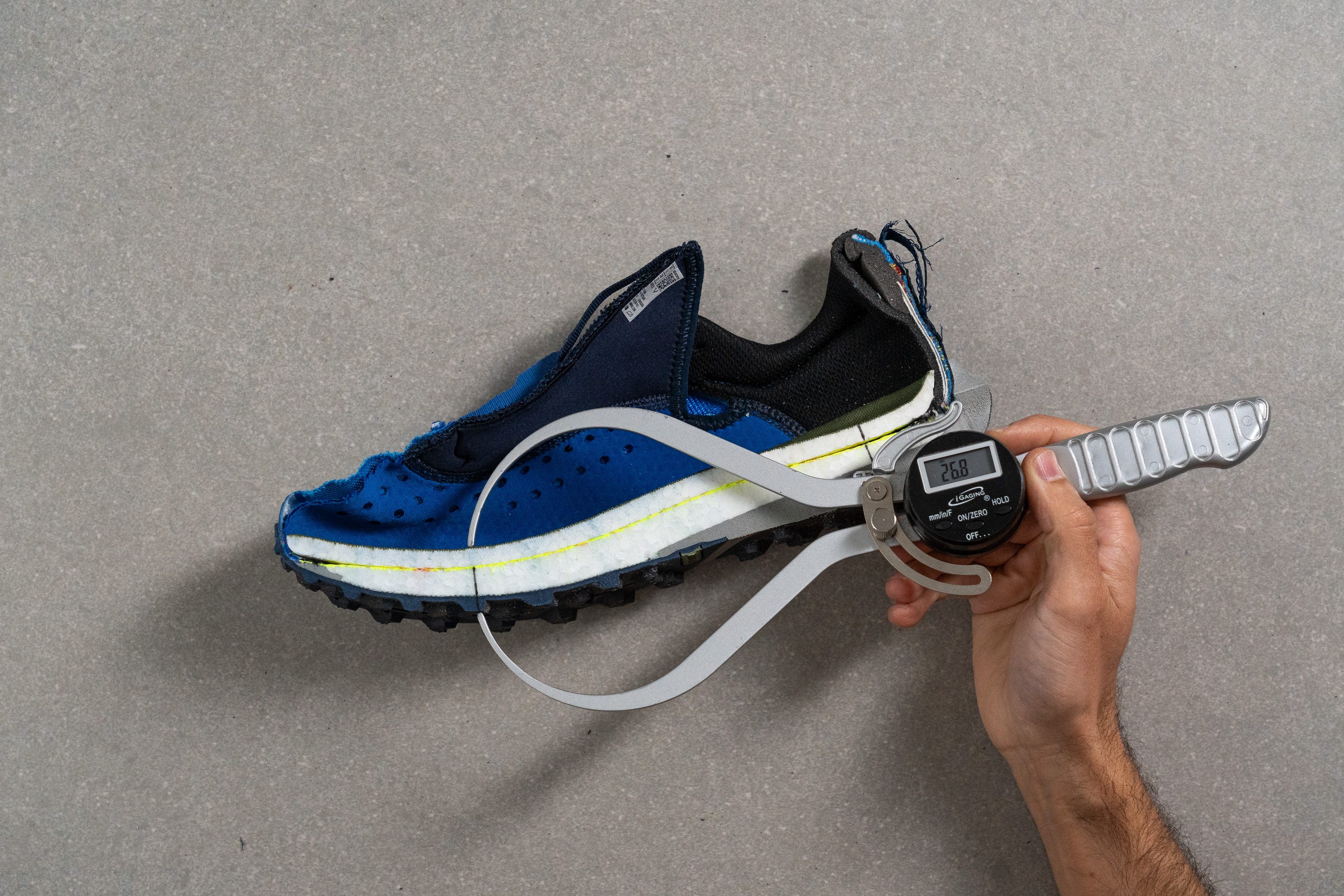
| Xodus Ultra 2 | 26.8 mm |
| Average | 25.1 mm |
Drop
The gap between those two measurements gives us a 7.3-mm drop, which is slightly off from the advertised 6 mm.
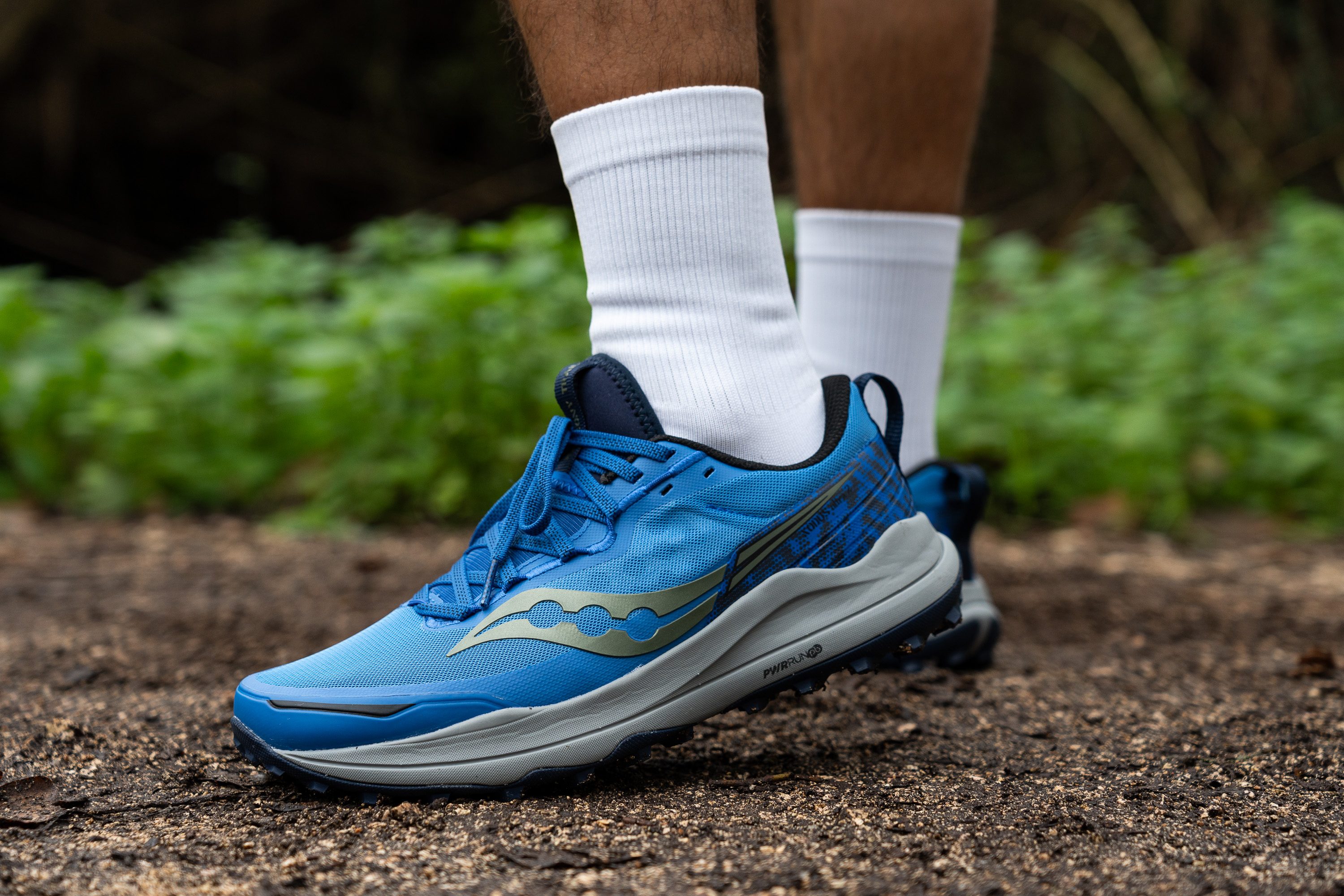
| Xodus Ultra 2 | 7.3 mm |
| Average | 7.5 mm |
Midsole softness
The Xodus Ultra 2 boasts a dual-foam setup.
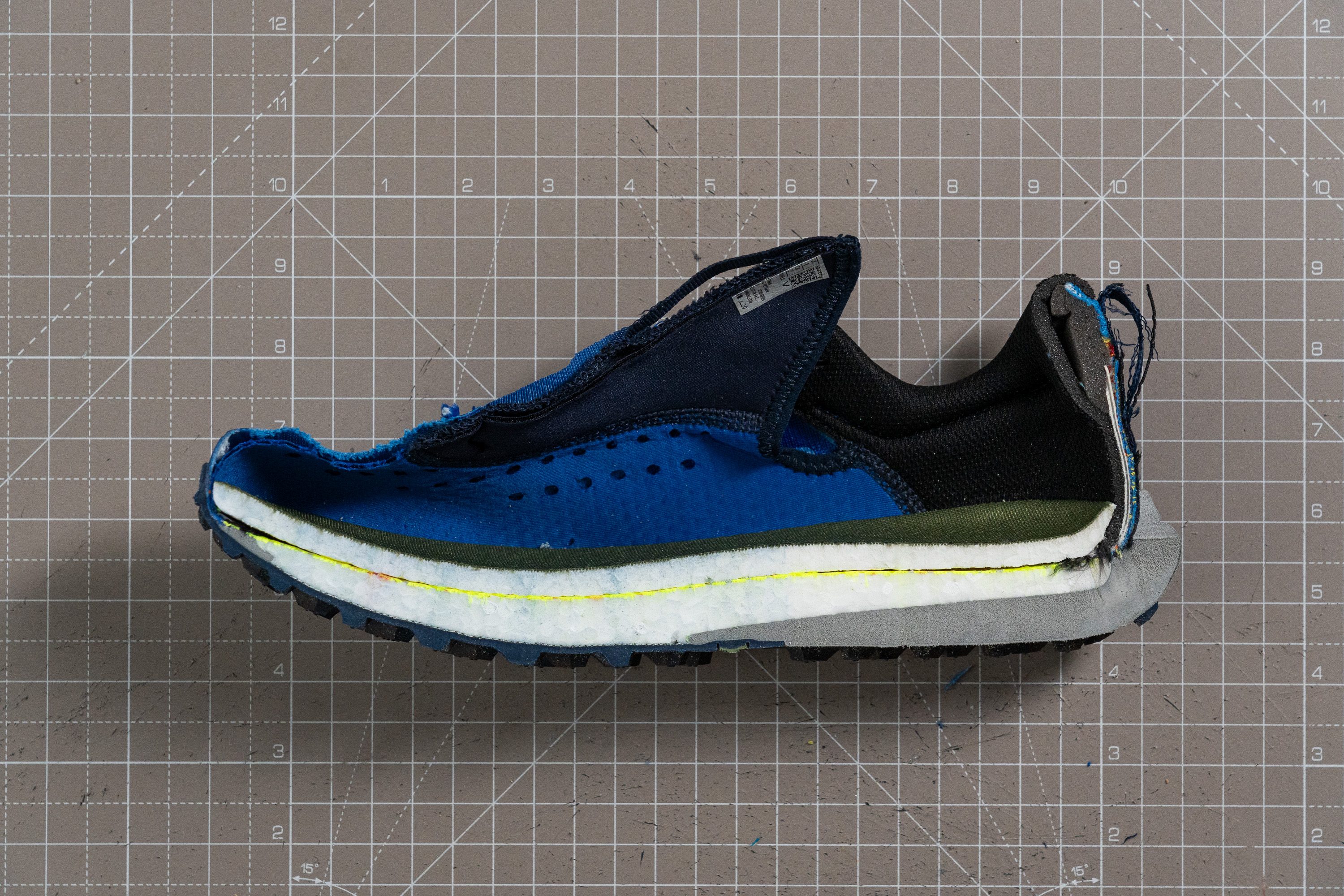
The bulk of the midsole—forefoot, midfoot and part of the heel—is made of PWRRUN PB (27.5 HA), a Pebax-based, pellet-shaped compound renowned for its incredible energy return and responsiveness.
It certainly lives up to expectations, though Saucony has adjusted the formula in this shoe, making it firmer than what we're accustomed to. Nevertheless, while it might not be super soft, it's undeniably very responsive.
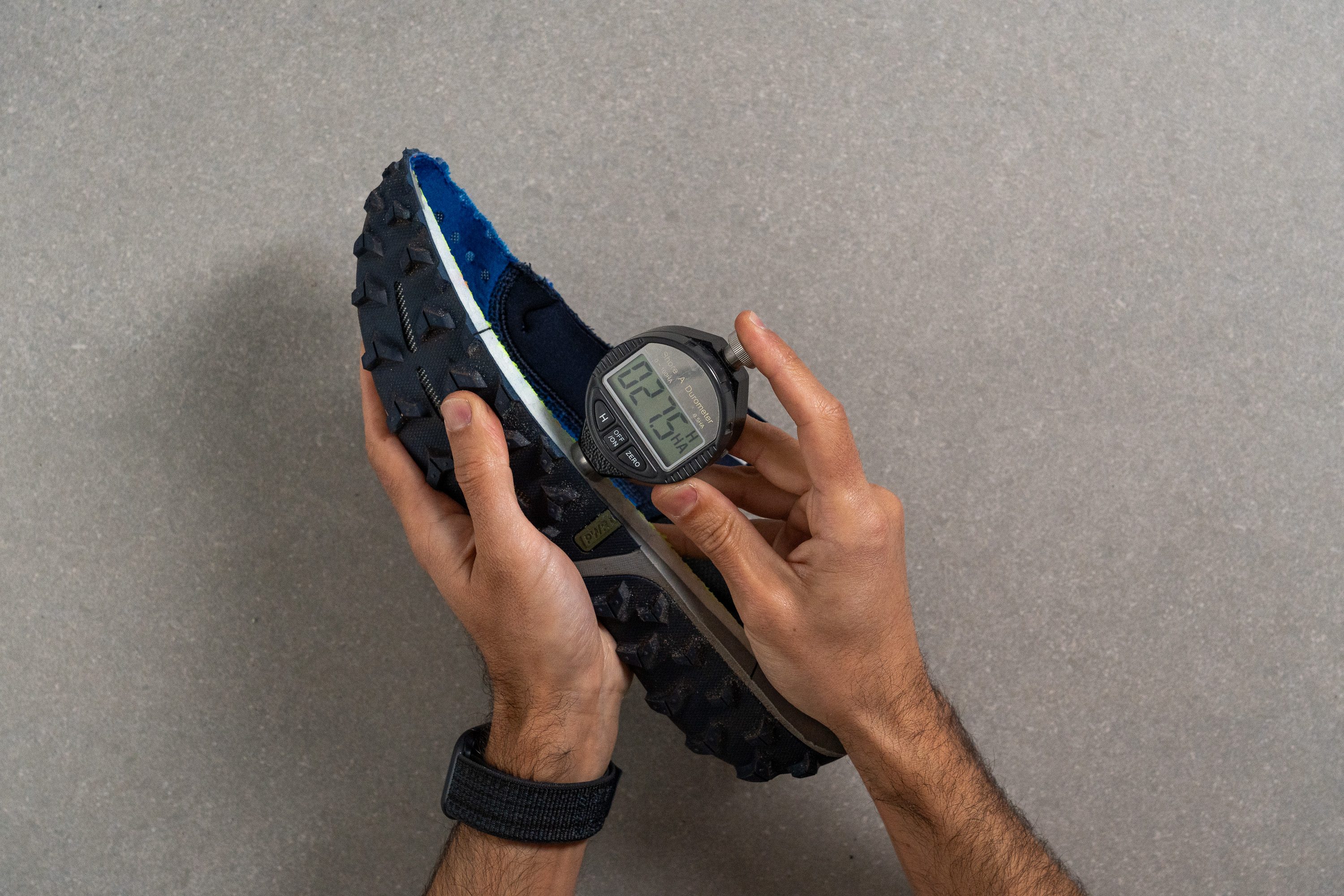
| Xodus Ultra 2 | 27.5 HA |
| Average | 21.9 HA |
Secondary foam softness
The secondary, grey foam is PWRRUN. It's even firmer at 29.5 HA, which is why Saucony used it in the heel—to enhance stability and durability.
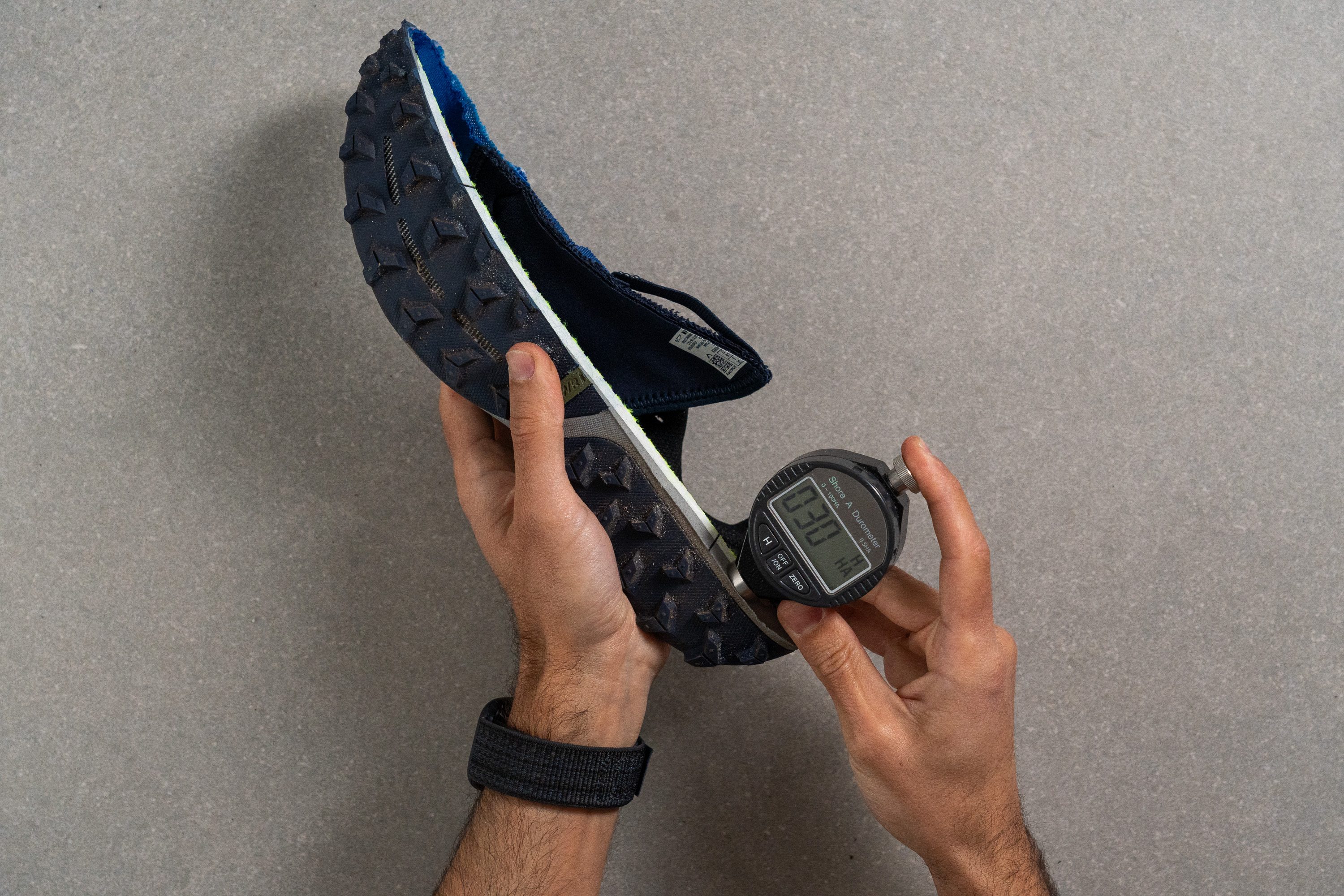
| Xodus Ultra 2 | 29.5 HA |
| Average | 25.5 HA |
Size and fit
Size
Saucony Xodus Ultra 2 fits true to size (24 votes).
Width / Fit
When we first tried on the Xodus Ultra 2, the toebox seemed reasonably spacious, though not remarkably so. We then used callipers to measure the upper and found it to be 99.5 mm at its widest point, essentially confirming our initial impressions.

This test follows an older methodology, which is why you don't see recently tested shoes in the chart. Results from different methodologies can not be compared.
| Xodus Ultra 2 | 99.5 mm |
| Average | 98.9 mm |
Toebox width
The big toe area has a standard taper, resulting in a 79.1-mm width. This design should suit 90% of runners well, but those with very wide feet might feel a bit cramped, especially on runs longer than 2 hours.
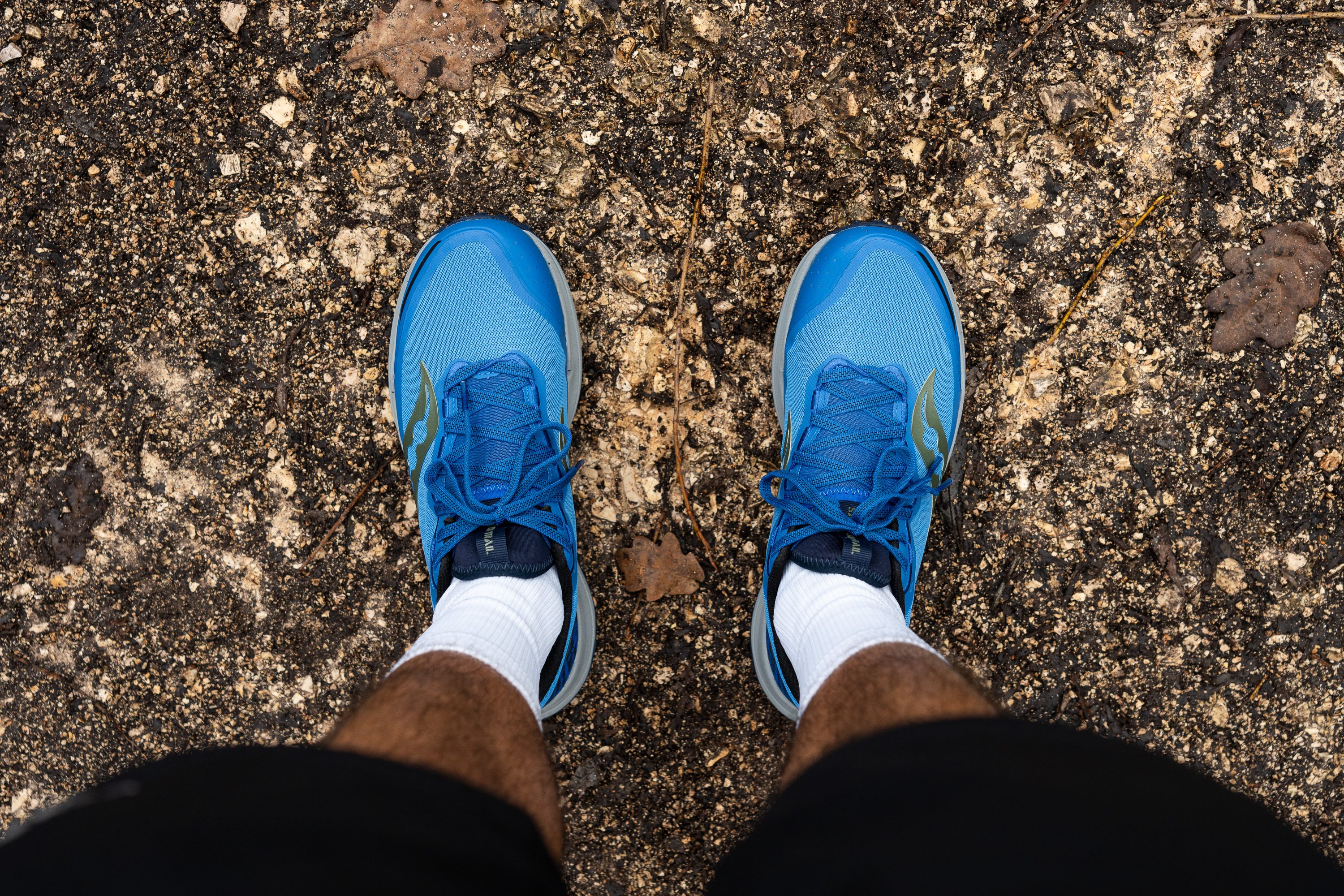
For a shoe with a super-responsive midsole and a wider upper, we recommend the Nike Ultrafly.
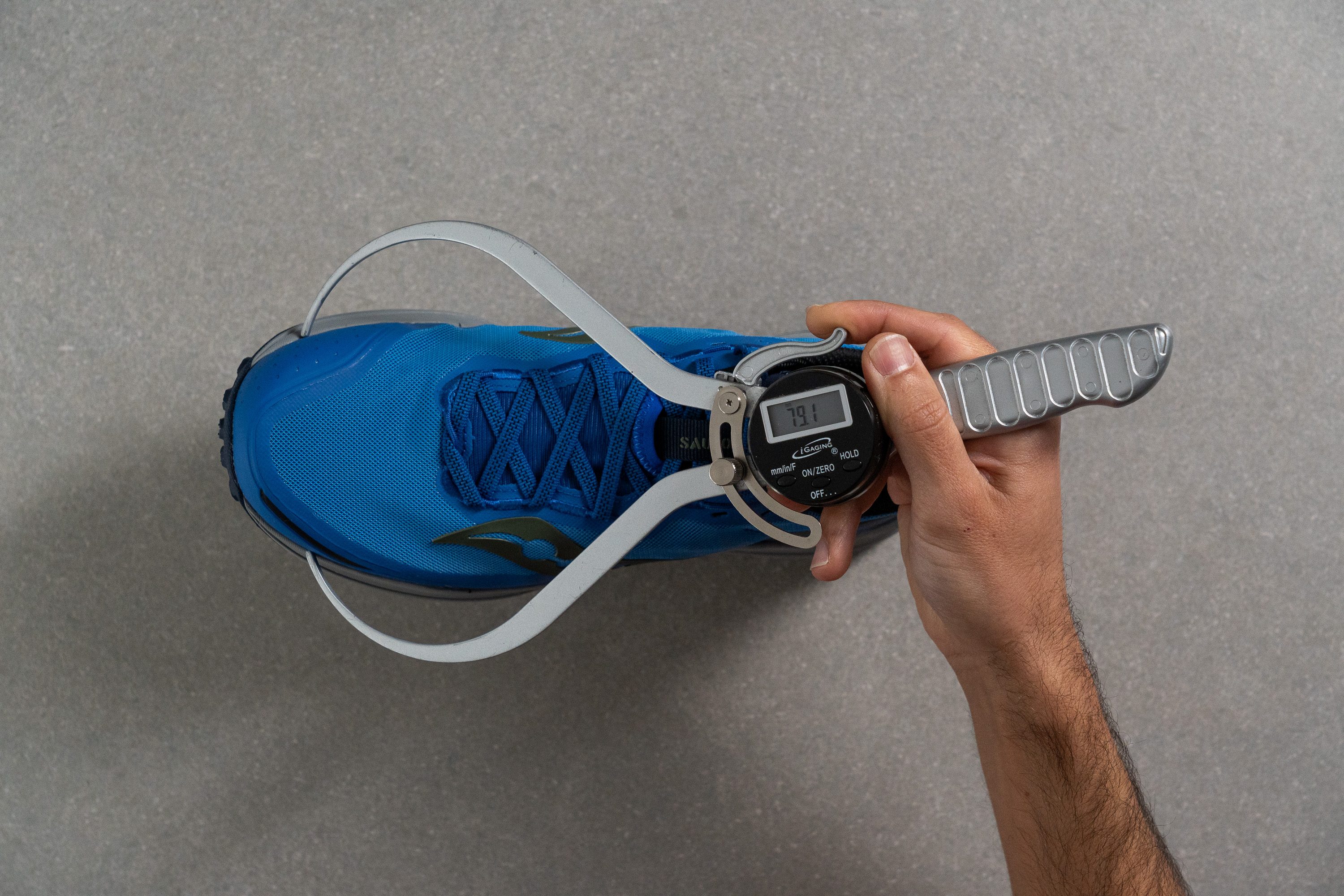
This test follows an older methodology, which is why you don't see recently tested shoes in the chart. Results from different methodologies can not be compared.
| Xodus Ultra 2 | 79.1 mm |
| Average | 79.3 mm |
Traction / Grip
Lug depth
The Xodus Ultra 2 comes with 4.6 mm lugs, great for those looking to handle a variety of terrains. While 3 or 3.5 mm lugs might be better for quick runs on easy trails, a do-it-all shoe requires trading a bit of comfort for versatility, which is exactly what Saucony has achieved here.

Each lug is chevron-shaped, with the heel lugs facing backwards and the forefoot lugs pointing forwards, enhancing traction during elevation changes.

| Xodus Ultra 2 | 4.6 mm |
| Average | 3.5 mm |
Flexibility / Stiffness
Now, we're excited to examine the longitudinal stiffness—an essential factor, particularly for those keen on using the shoe for more than running.
We discovered that it took just 26.3N of force to bend it to the 90-degree point, our standard bend for every shoe. This highlights the XU2's versatility.
This test follows an older methodology, which is why you don't see recently tested shoes in the chart. Results from different methodologies can not be compared.
| Xodus Ultra 2 | 26.3N |
| Average | 27.1N |
Stiffness in cold (%)
As happened when we re-measured the midsole softness, the Pebax-based PWRRUN PB delivered another fantastic performance, only getting 13.4% stiffer after spending 20 minutes next to our ice creams.
| Xodus Ultra 2 | 13% |
| Average | 32% |
Weight
Moving on to the weight, it was somewhat disappointing, especially since the shoe appears lighter than it actually is.
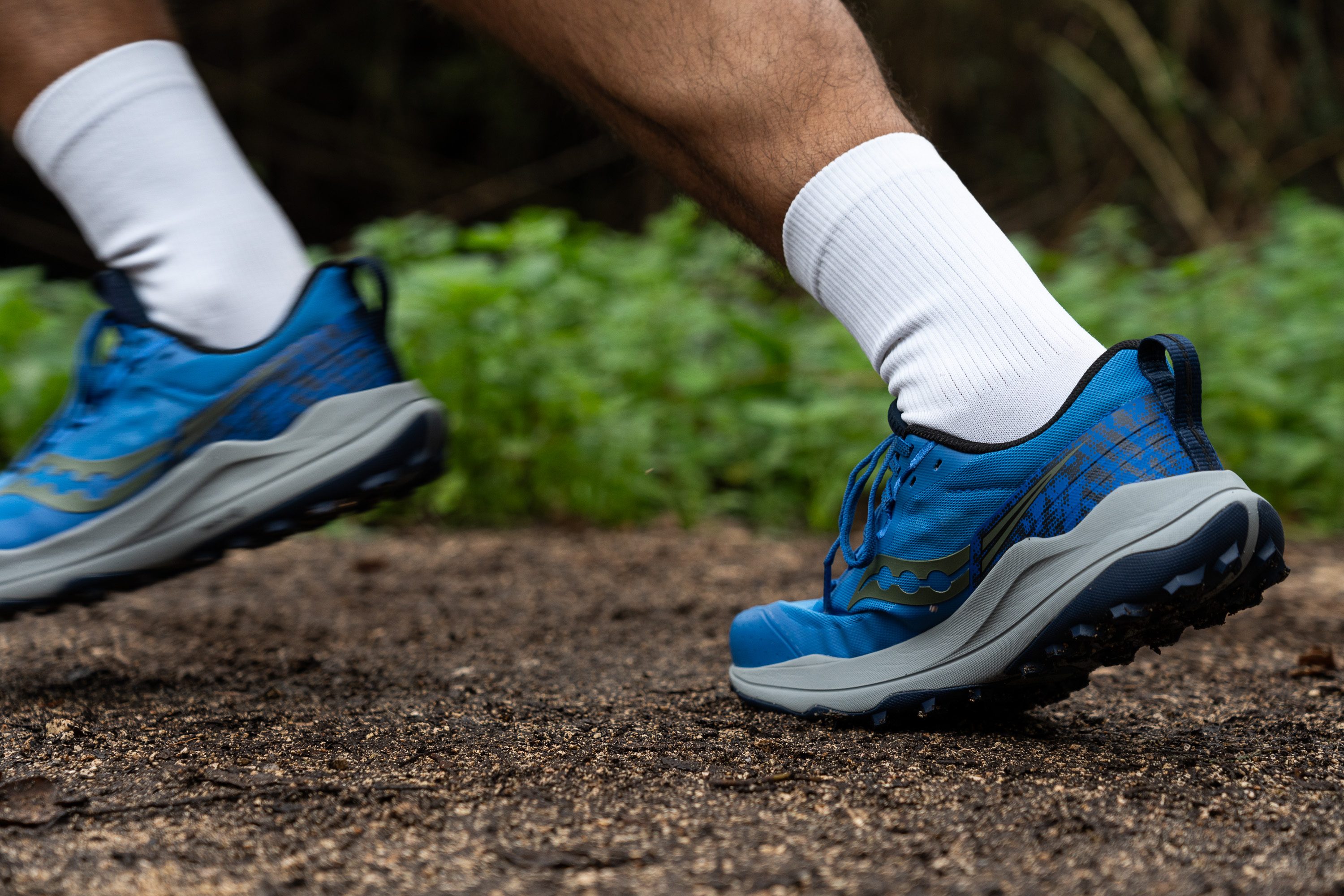
Weighing in at 10.3 oz, it's totally acceptable for a trail running shoe, yet it seems excessive given the stack height and lightweight upper. Surprisingly, it matches the weight of an ASICS Trabuco Max 2, which boasts significantly more cushioning underfoot and a cosier upper.
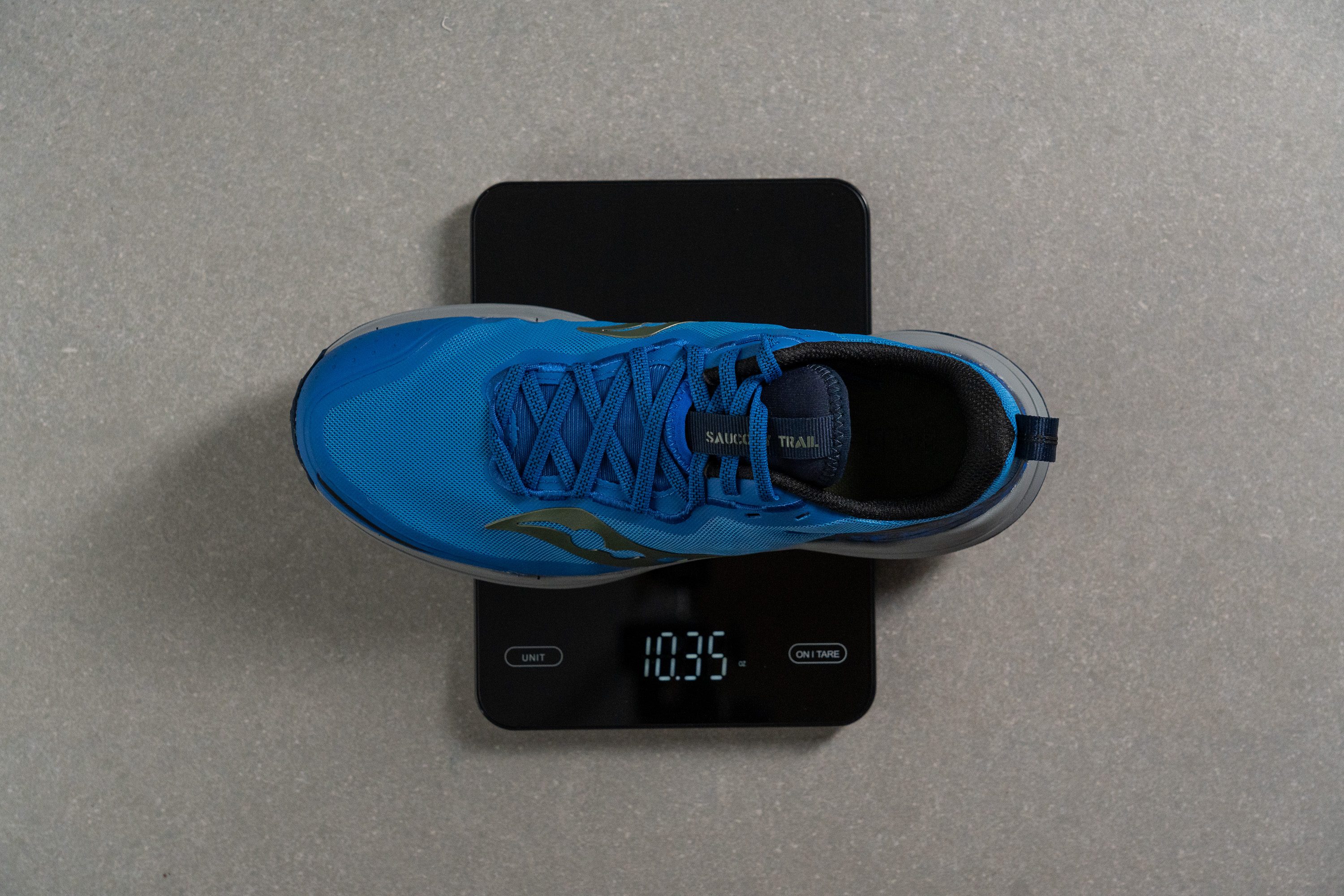
| Xodus Ultra 2 | 10.3 oz (293g) |
| Average | 10.2 oz (289g) |
Breathability
With "Ultra" in its name, a breathable upper is crucial—otherwise, blisters are just around the corner. So, we're curious if the Xodus Ultra 2 lives up to expectations in this area.
In the lab, using our smoke-pumping machine, we discovered Saucony nailed the airflow, earning the XU2 a solid 4 out of 5 from us. This ensures well-ventilated runs for as long as you wish, with a bit of protection against the cold for winter runs. Especially in trail shoes, we often prefer this balance over maximum ventilation.
To understand how the shoe scored a 4/5, we simply turned on a light and moved the cut-in-half upper. At times, a straightforward test like this is all it takes to get the full picture.
In this case, the large, circular holes in the inner mesh clearly stand out, offering an excellent route for air to flow through.
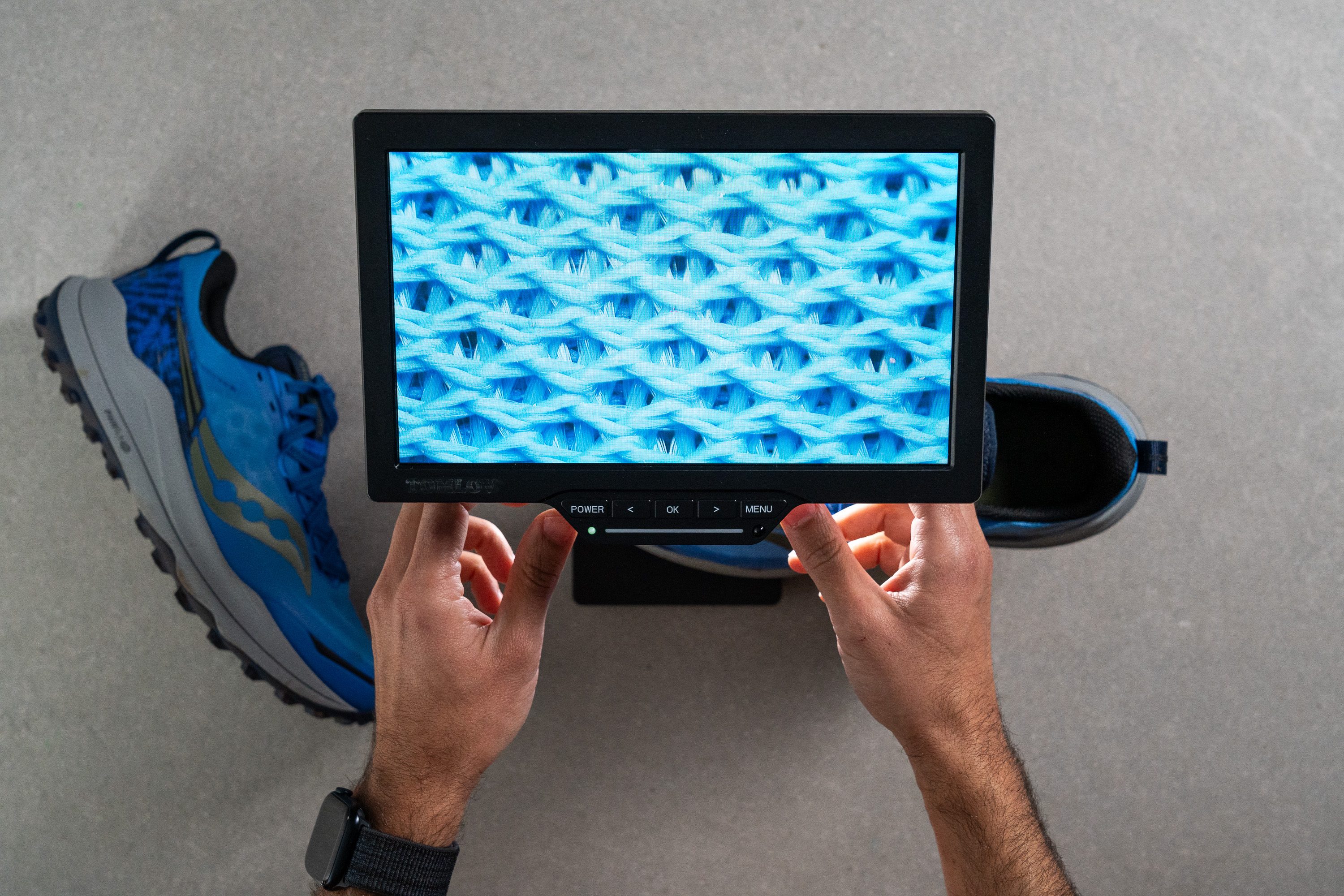
Upon closer inspection under the microscope, we encountered a very dense engineered mesh. It was crucial for Saucony to incorporate those holes we observed with the light test; without them, the breathability would have been less impressive.
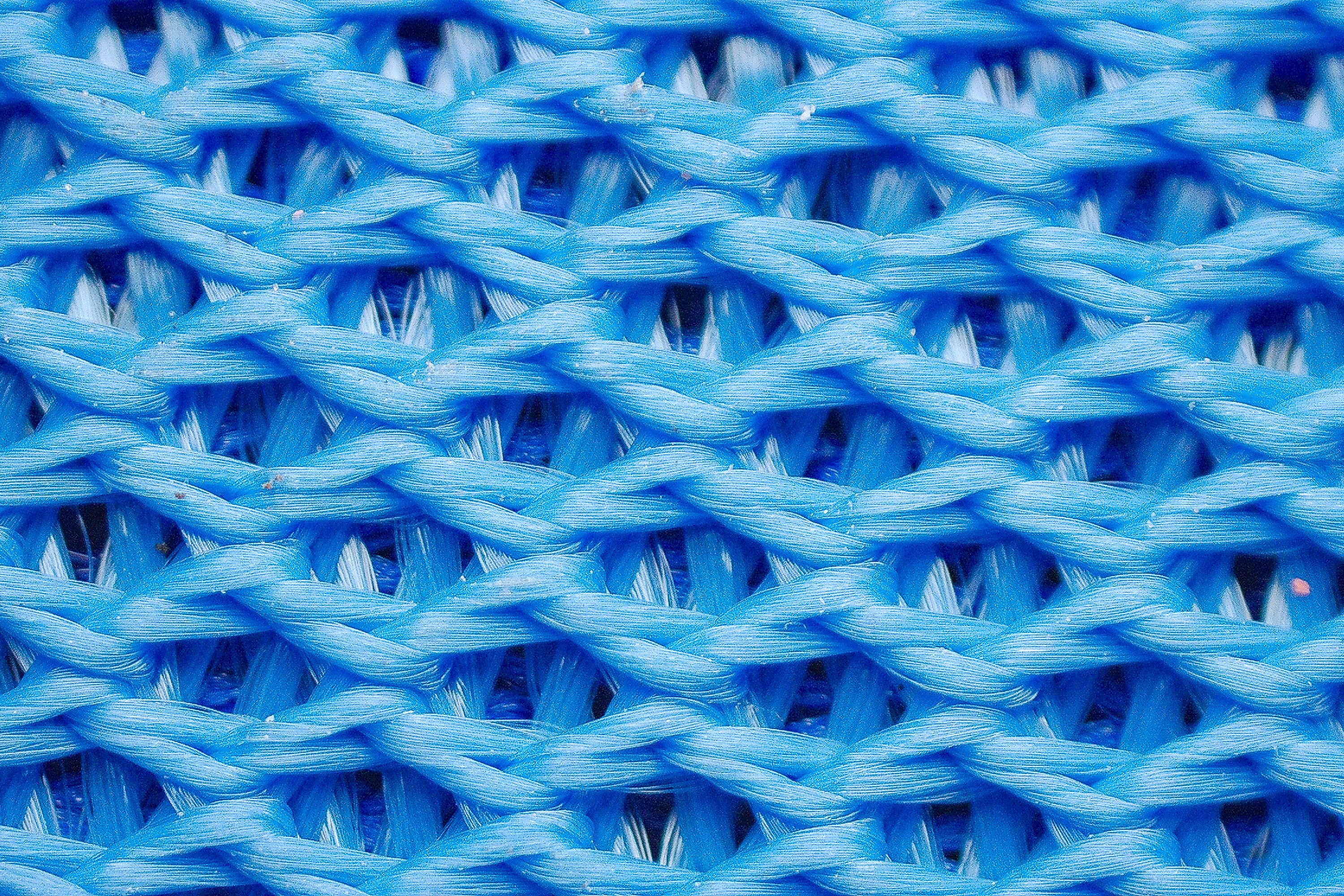
Lastly, we examined the engineered mesh upper in detail.
It features a dual-layer construction that isn't glued together—a rarity in today's market.
| Xodus Ultra 2 | 4 |
| Average | 3.2 |
Stability
Lateral stability test
While some might find the firmer PWRRUN PB midsole of the Xodus Ultra 2 a tad disappointing compared to expectations, it brings with it several appreciated advantages. The best among them is the shoe's remarkable stability, particularly noticeable at quicker paces.
This isn't just due to the foam itself, but also the ingeniously designed midfoot sidewalls by the Saucony crew. These offer gentle guidance without being overly intrusive, enhancing the running experience for neutral runners and those with small stability concerns.
Torsional rigidity
Another reason the shoe feels so stable is its torsional rigidity, which we rated at 4 out of 5 in our manual assessment.
| Xodus Ultra 2 | 4 |
| Average | 3.6 |
Heel counter stiffness
The heel counter also earns a 4 out of 5 for the Xodus Ultra 2. In this case, we would have preferred a softer one, especially for +3 hours runs. However, since it's well padded, it shouldn't pose a problem.
| Xodus Ultra 2 | 4 |
| Average | 3 |
Midsole width - forefoot
Remember how we mentioned earlier that the shoe felt lighter than it actually is? Well, now it's time for us in the lab to verify those dimensions.
In the forefoot, we measured 112.5 mm, which isn't particularly wide. It's just average.
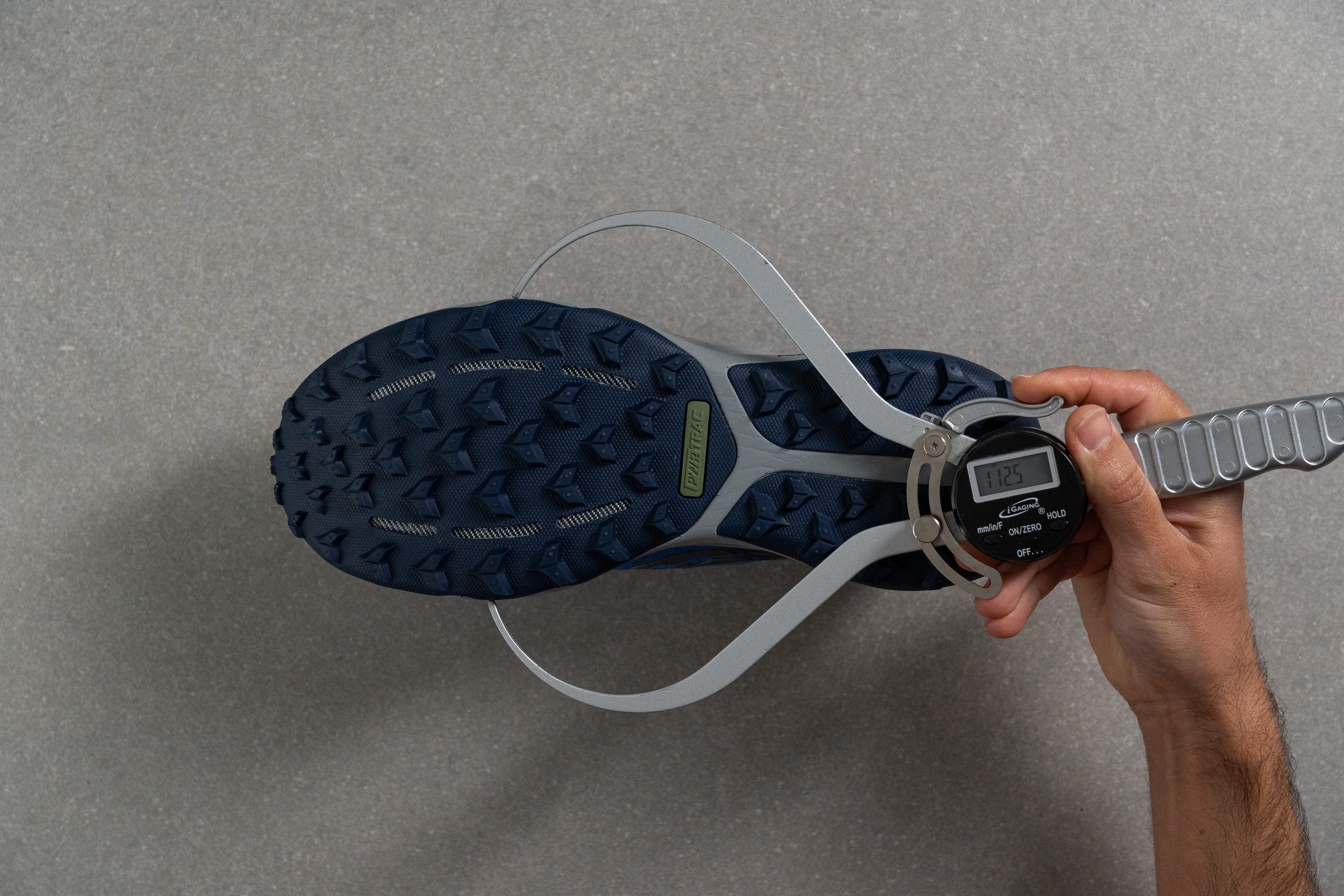
| Xodus Ultra 2 | 112.5 mm |
| Average | 112.8 mm |
Midsole width - heel
The same applies to the heel, where we measured 91.1 mm. In the lab, we all agree that the shoe resembles a daily trainer designed for the trails.
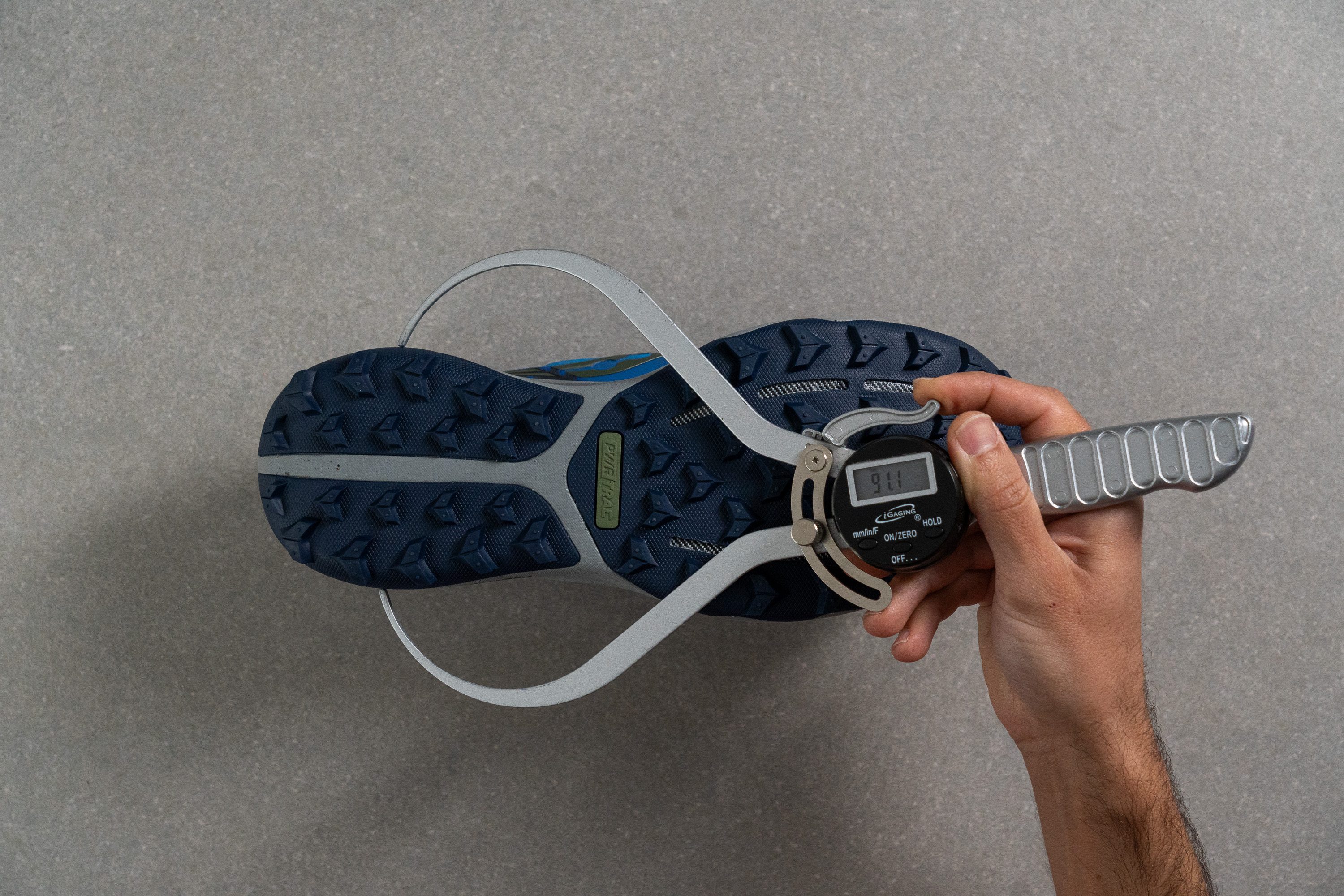
| Xodus Ultra 2 | 91.1 mm |
| Average | 89.9 mm |
Durability
Toebox durability
Saucony doesn't design the Xodus line as particularly rugged—quite the contrary, in fact. So, it's no surprise the toebox lacks robust protective features, offering just a minimal toe bumper. When we put it to the test with our Dremel, it broke the upper with ease.
Because of this shortfall, we rated the XU2 a 2 out of 5, falling below the average mark. It was a close call between that and an even lower score of 1 out of 5. Thankfully, the double-layered mesh provided just enough redemption to save the Xodus from hitting rock bottom.
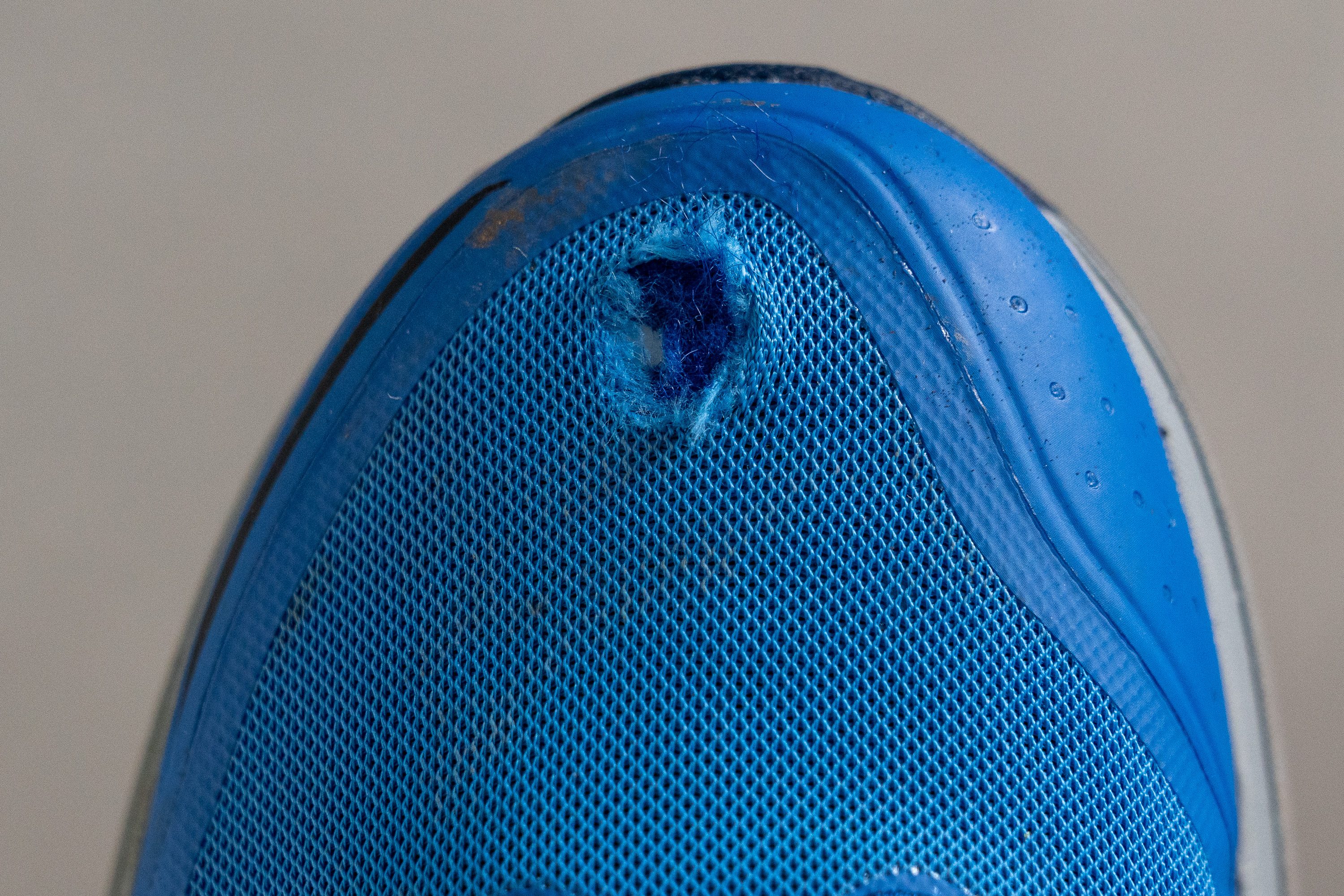
| Xodus Ultra 2 | 2 |
| Average | 3.1 |
Heel padding durability
The heel padding truly outshined the toebox, snagging a stellar 4 out of 5 after our rigorous back-to-back Dremel tests.
This impressive result promises enduring durability in this crucial area, especially beneficial for runners whose socks tend to rub against the fabric.
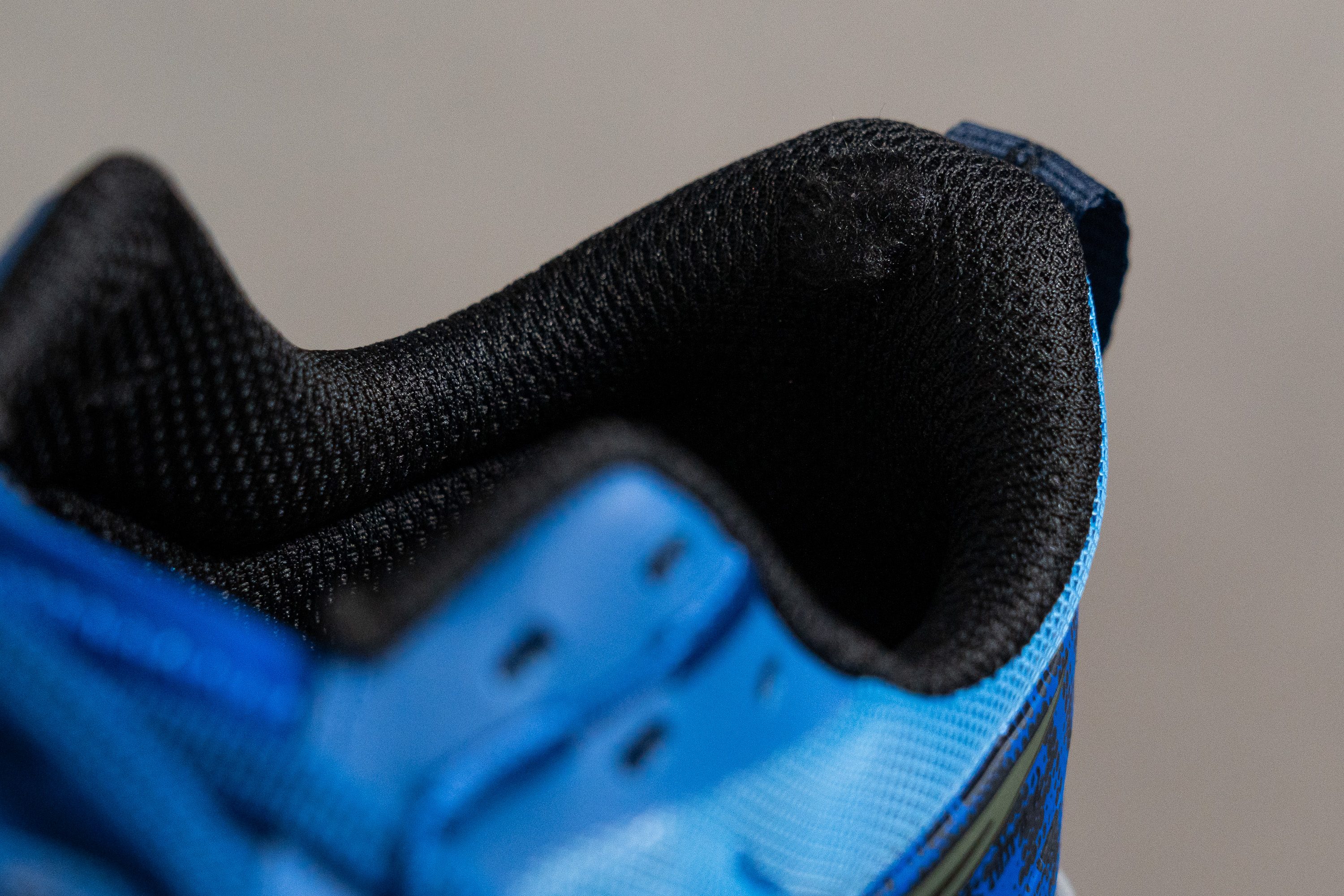
| Xodus Ultra 2 | 4 |
| Average | 3 |
Outsole hardness
Now, let's give the Dremel a brief pause—it'll be back shortly for its final test. First, we aimed to check out the softness of the 3-piece PWRTRAC outsole, which closely resembles the one on the carbon-plated Endorphin Edge.
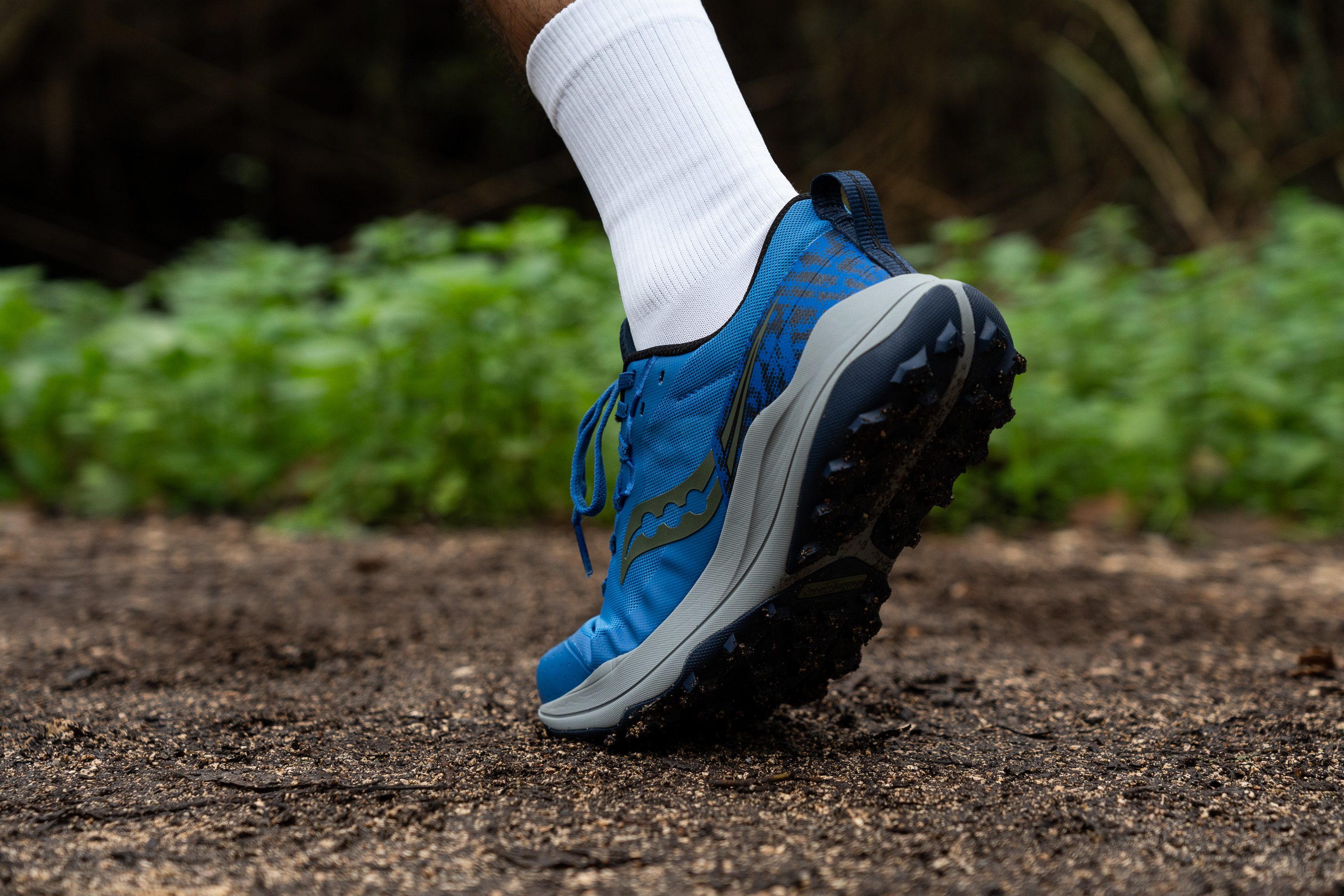
With a hardness of 80.0 HC, it tends toward the softer side. This might hint at a trade-off in durability, but it also suggests that Saucony is prioritising grip.
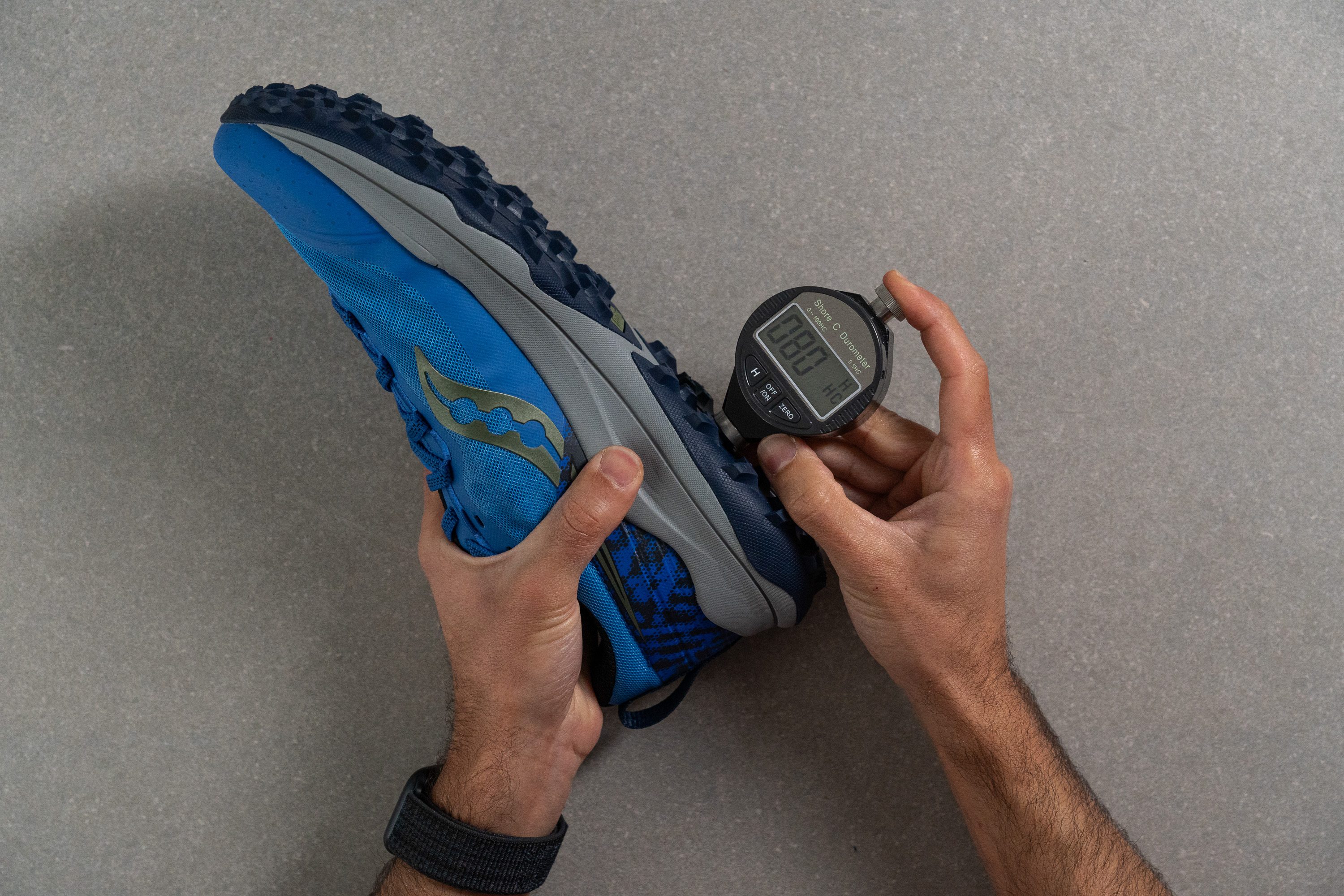
| Xodus Ultra 2 | 80.0 HC |
| Average | 85.8 HC |
Outsole durability
Let's fire up the Dremel once more because we're eager to test the durability of the PWRTRAC rubber.
Considering it's a relatively soft rubber, we're quite pleased with the 1.2-mm indentation left by the tool. True, it may not boast the world-class durability of some Vibram outsoles, but with a result like this, we're not concerned about its longevity.
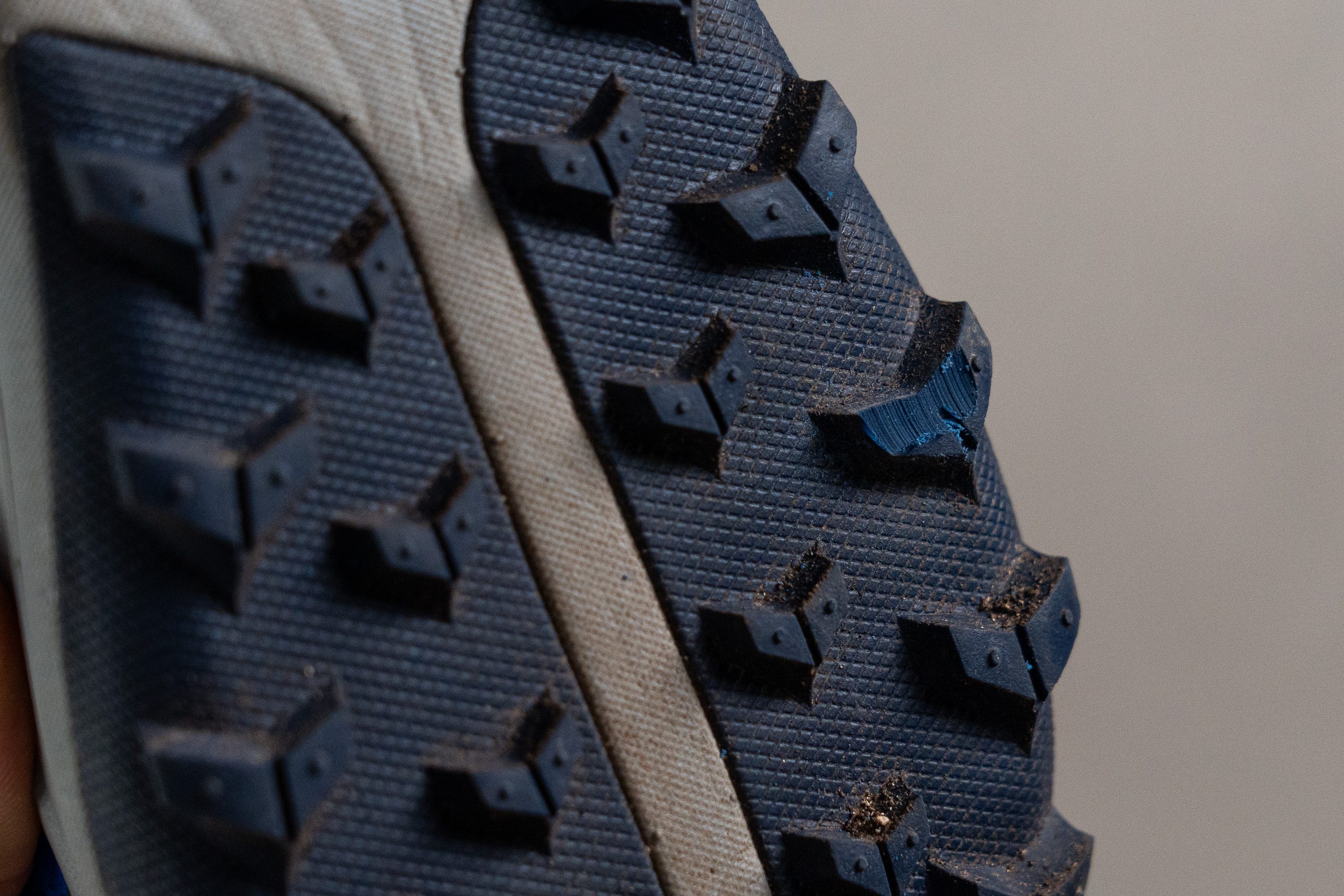
| Xodus Ultra 2 | 1.2 mm |
| Average | 0.9 mm |
Outsole thickness
Our concerns dwindled even further after measuring the outsole thickness, which hit a sweet spot at 2.4 mm. This thickness strikes a great balance, offering enough protection, while still ensuring a lively ride. Opting for thicker rubber often dulls the ride, so this approach is spot-on.
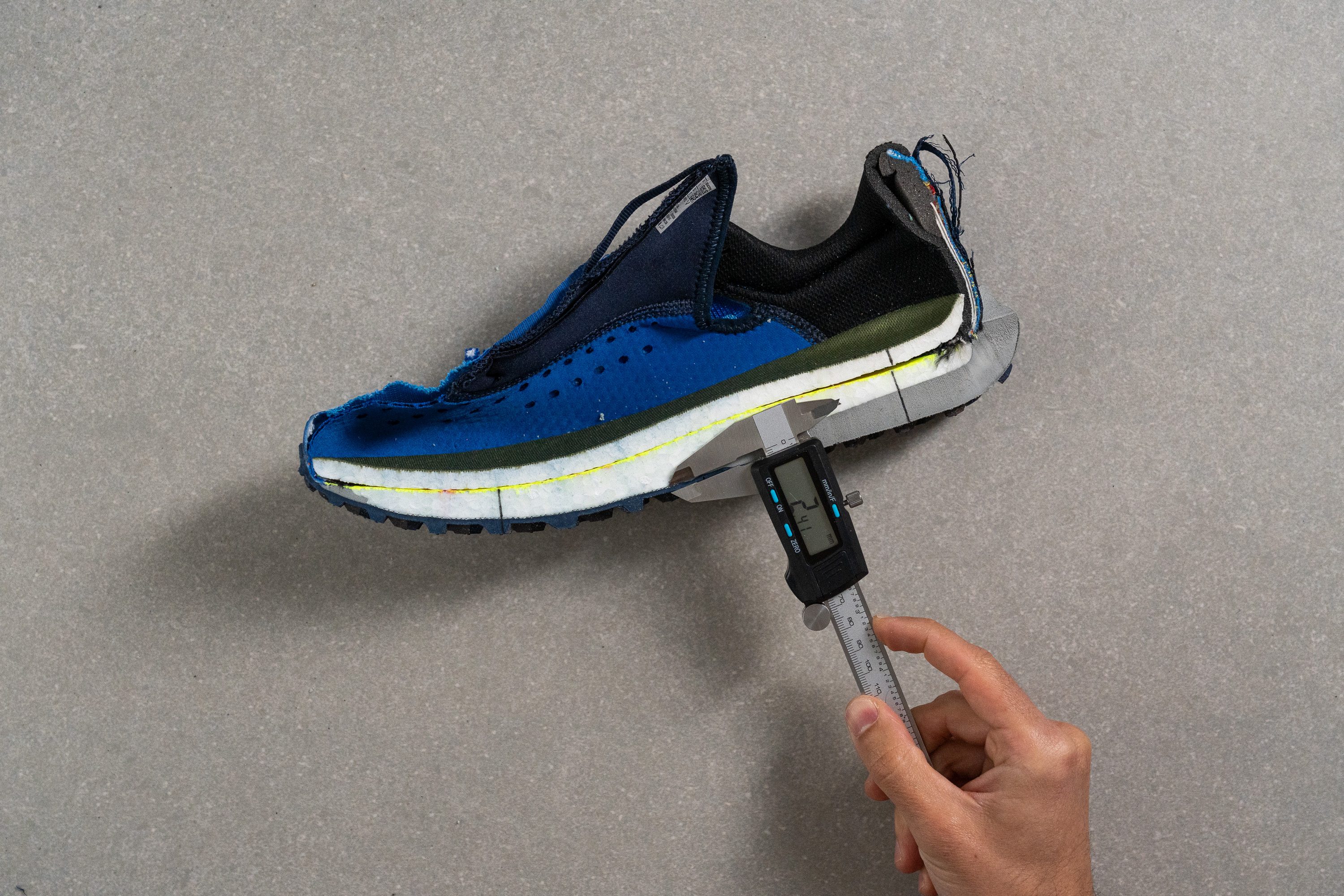
| Xodus Ultra 2 | 2.4 mm |
| Average | 2.2 mm |
Misc
Insole thickness
The insole stands out as one of the most fascinating aspects of this shoe, truly setting it apart from the rest. While most shoes feature basic, EVA insoles offering little beyond a touch of comfort, the Xodus Ultra 2 ups the game with a plush, 7.2-mm PWRRUN PB insole.
Indeed, this is the same top-notch foam used in shoes like the Saucony Endorphin Pro 3.
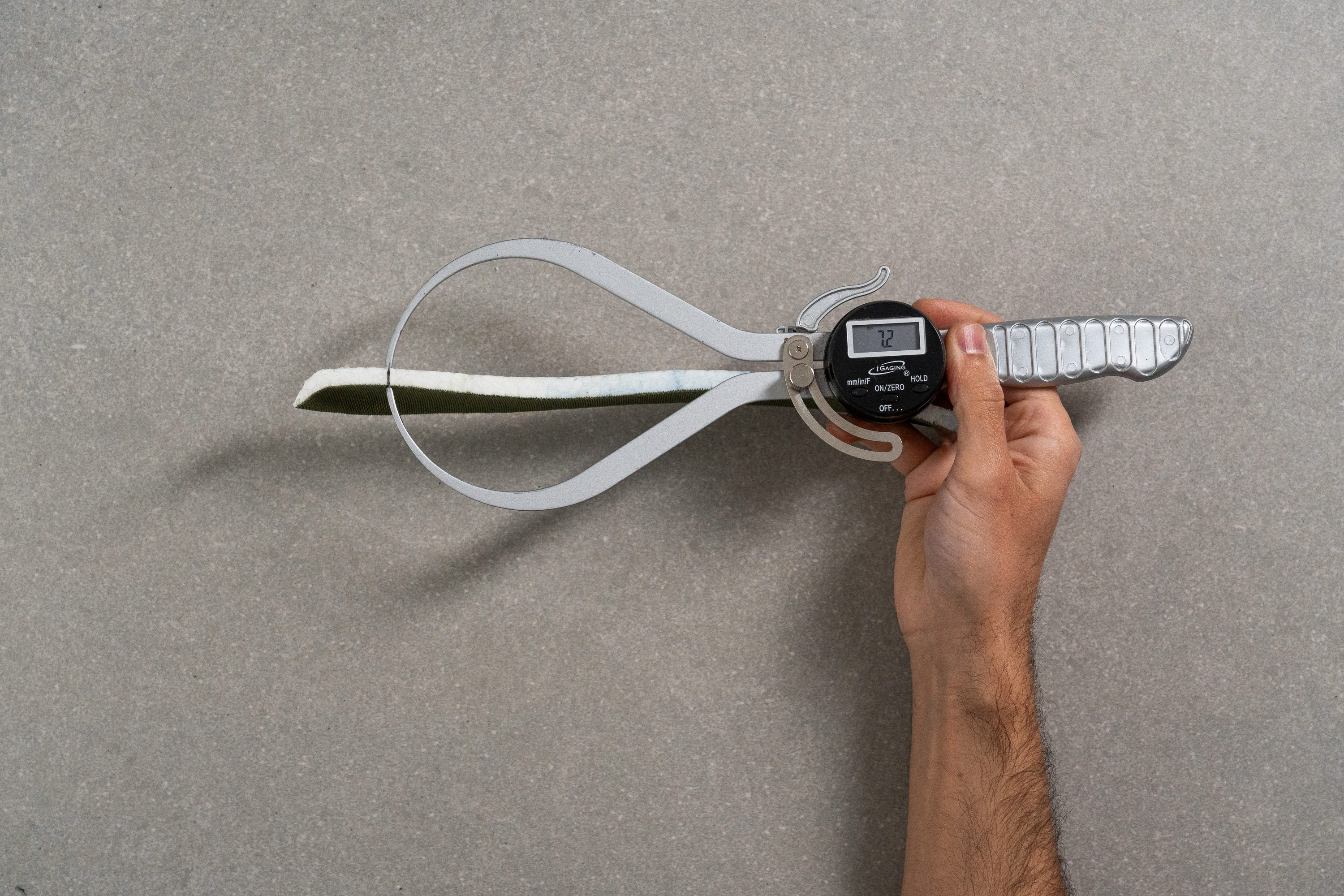
| Xodus Ultra 2 | 7.2 mm |
| Average | 4.7 mm |
Removable insole
The insole is removable, allowing you to switch it with your preferred third-party sockliner due to the shoe's standard dimensions.
However, we suggest keeping the original insole, crafted from PWRRUN PB—it's super cushioned, most definitely a highlight of the shoe!
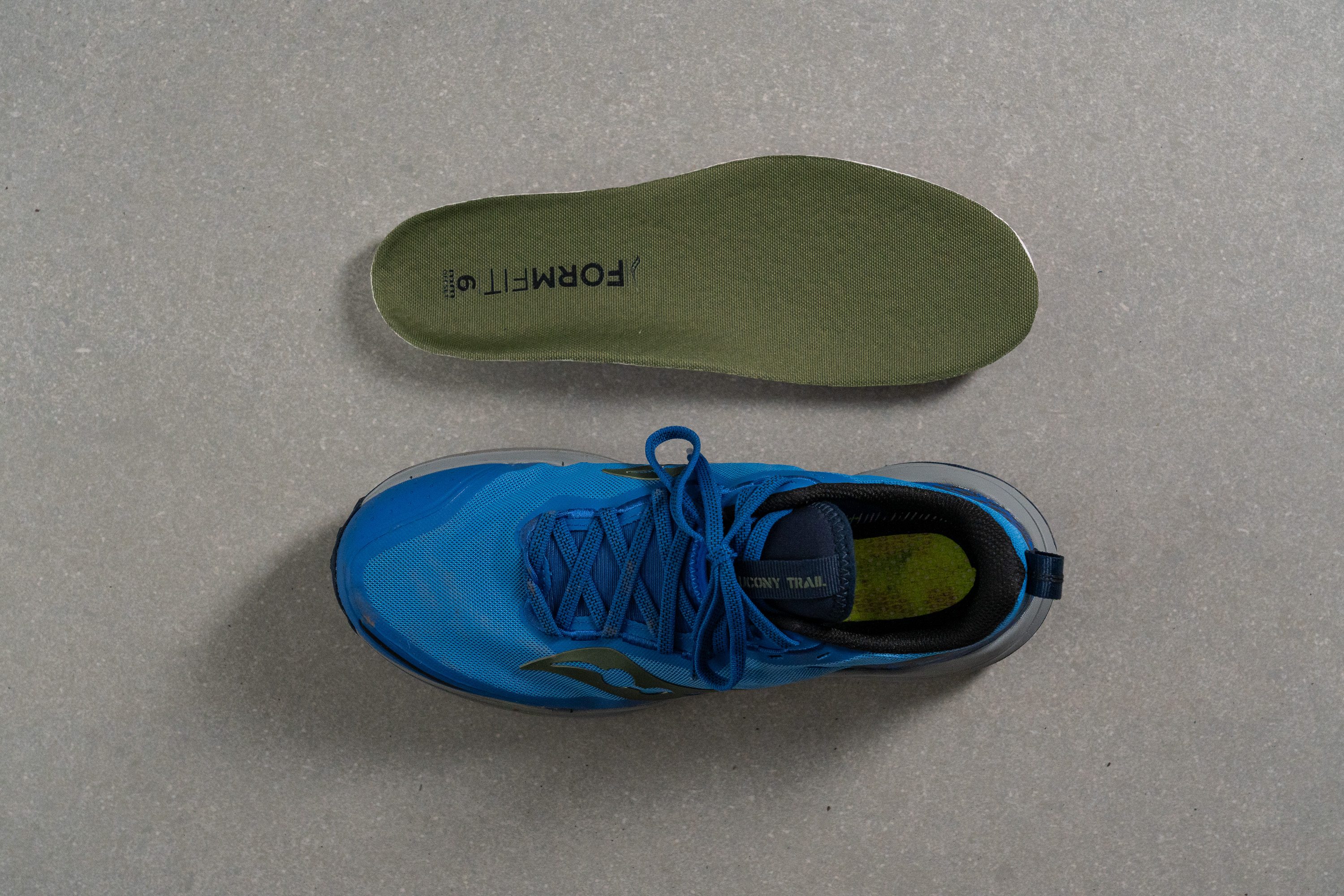
| Xodus Ultra 2 | Yes |
Midsole softness in cold (%)
As a Pebax-based foam, PWRRUN PB's performance in cold temperatures should be outstanding, and that's exactly what we observed. After spending 20 minutes in our freezer, we noted only a 19.1% change, marking a commendable performance.

| Xodus Ultra 2 | 19% |
| Average | 26% |
Reflective elements
Sadly, the Xodus Ultra 2 lacks any reflective pieces.
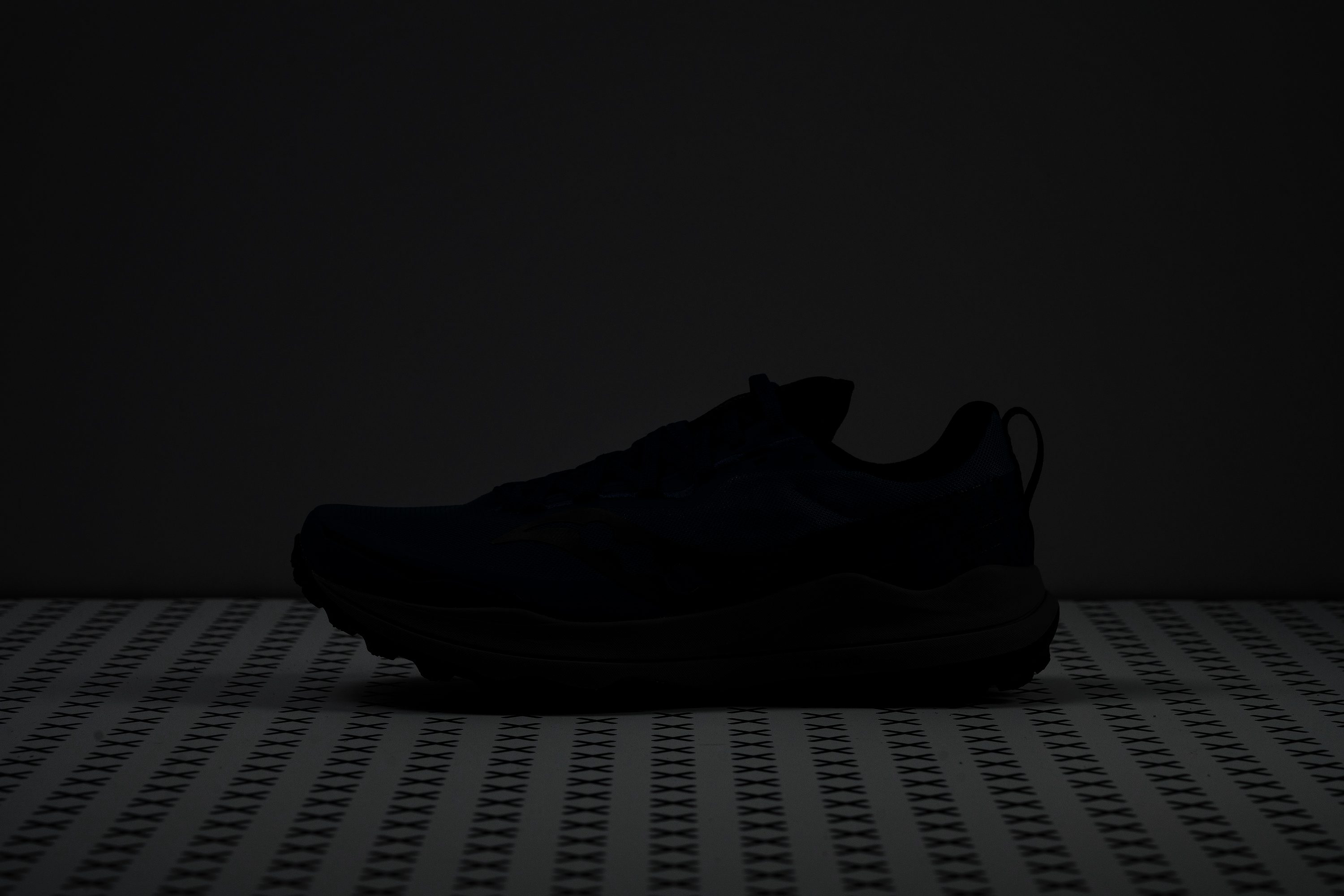
| Xodus Ultra 2 | No |
Tongue padding
The tongue is lightly padded at just 3.7 mm.
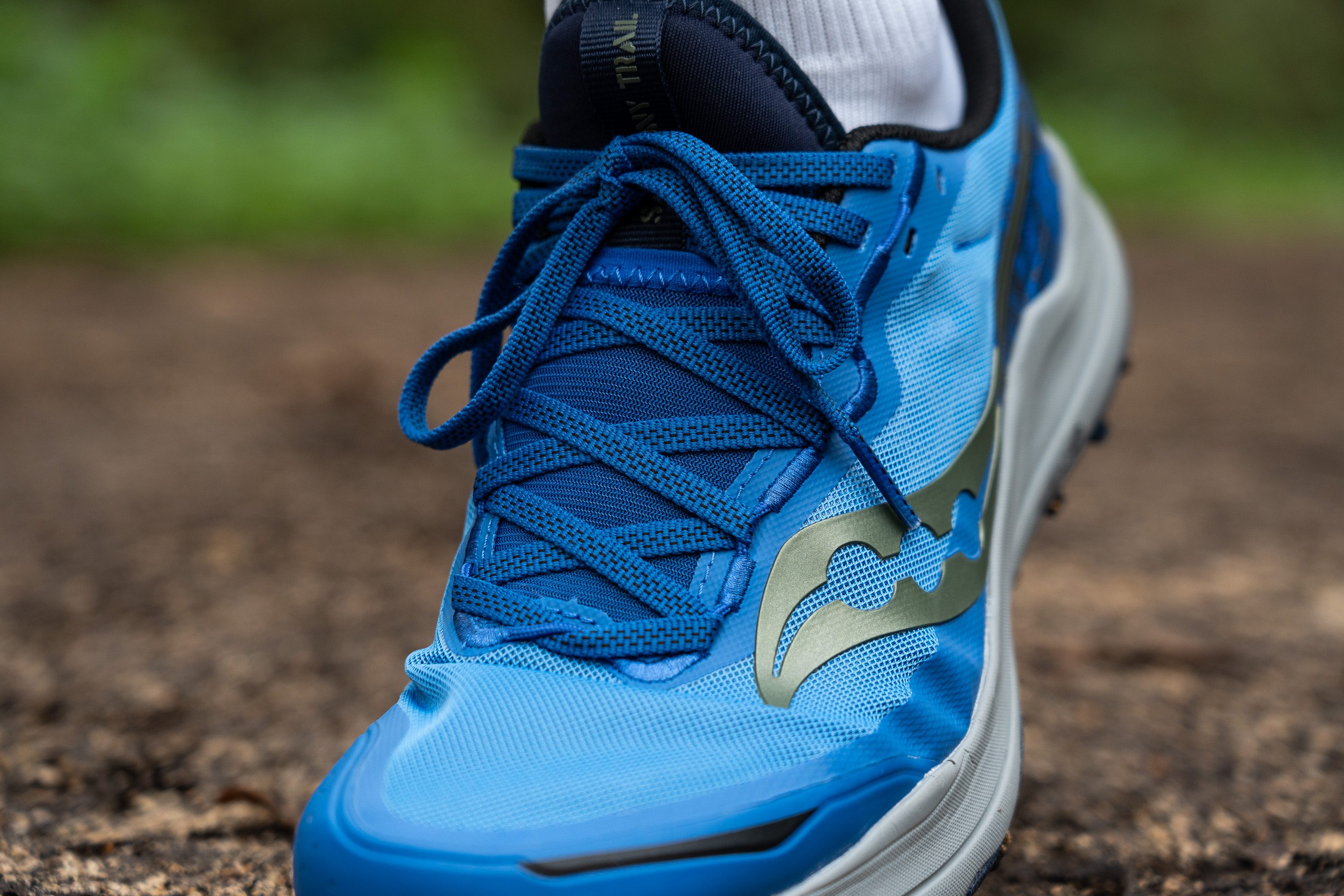
This could be a concern for runners planning to use the shoe for very long runs, so we advise being cautious when cinching down the laces.

| Xodus Ultra 2 | 3.7 mm |
| Average | 6.4 mm |
Tongue: gusset type
At the beginning of this lab review, we noted the Xodus unique dual-piece upper, and the tongue further illustrates this unconventional design.
Instead of a traditional tongue, it has a bootie-like construction that excellently blocks debris from entering the shoe. However, this might feel odd to runners not accustomed to such a setup.
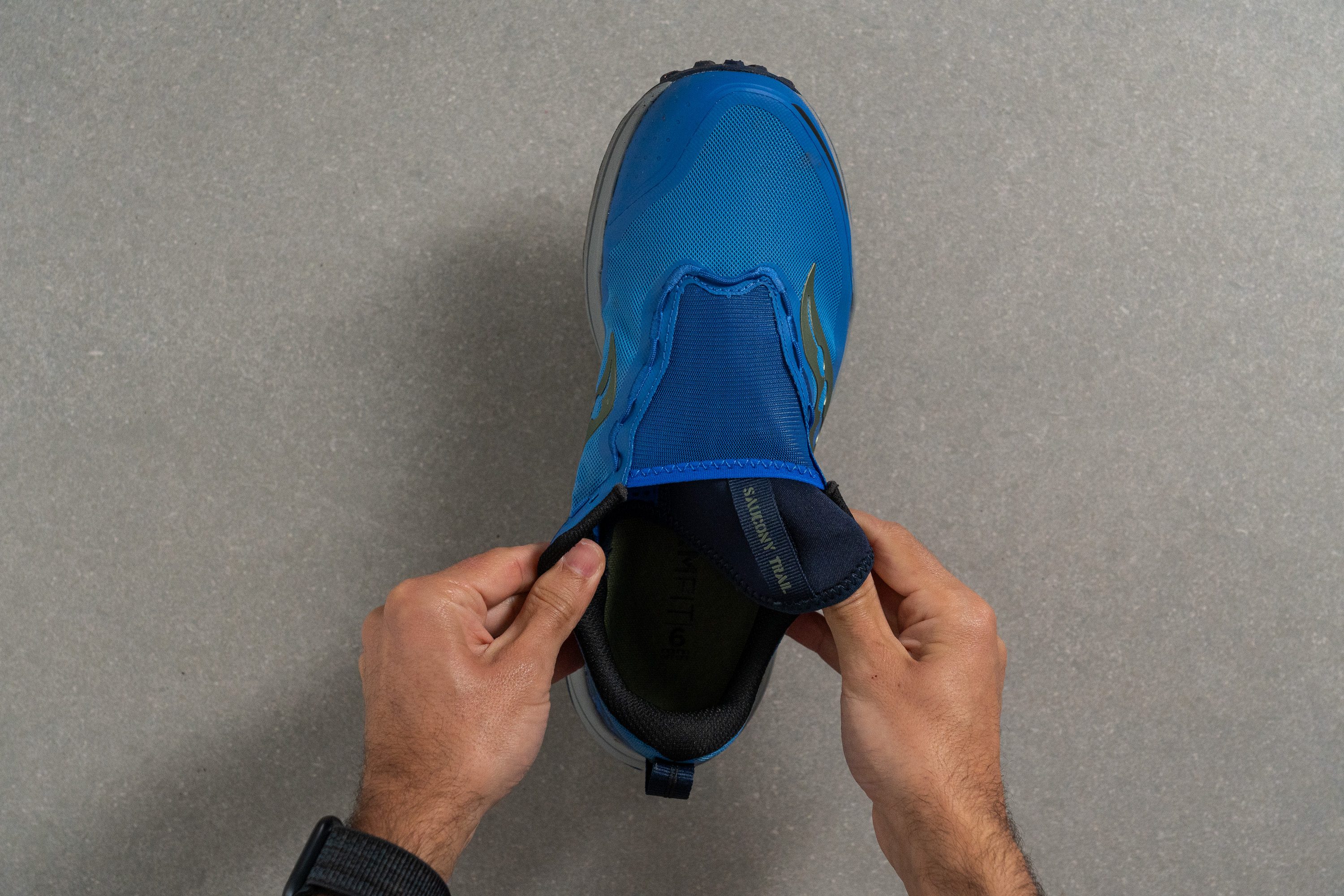
| Xodus Ultra 2 | Bootie |
Heel tab
We found that the heel boasts a finger-loop heel tab that looks great and makes really easy slipping your feet into the Xodus.
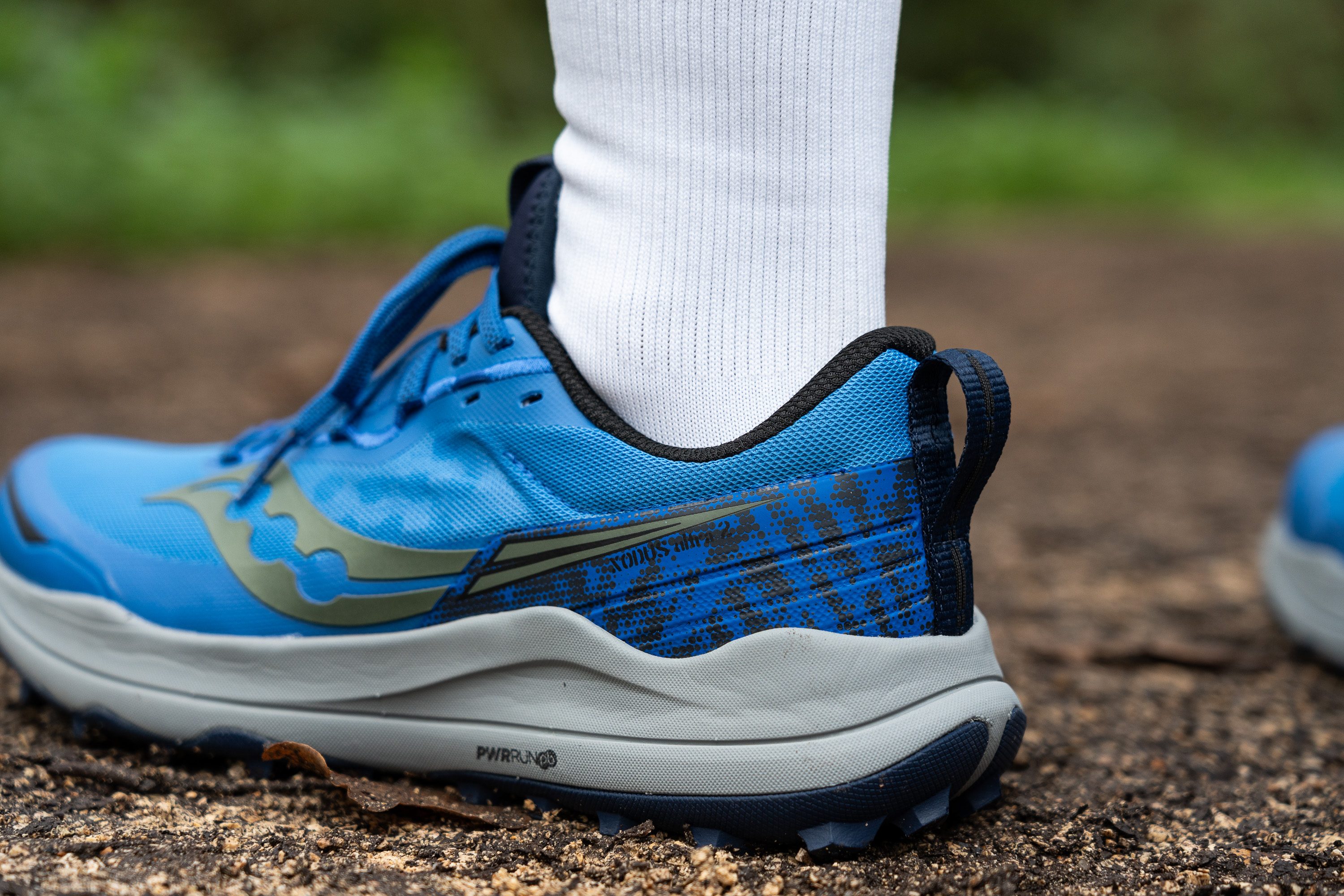
| Xodus Ultra 2 | Finger loop |

